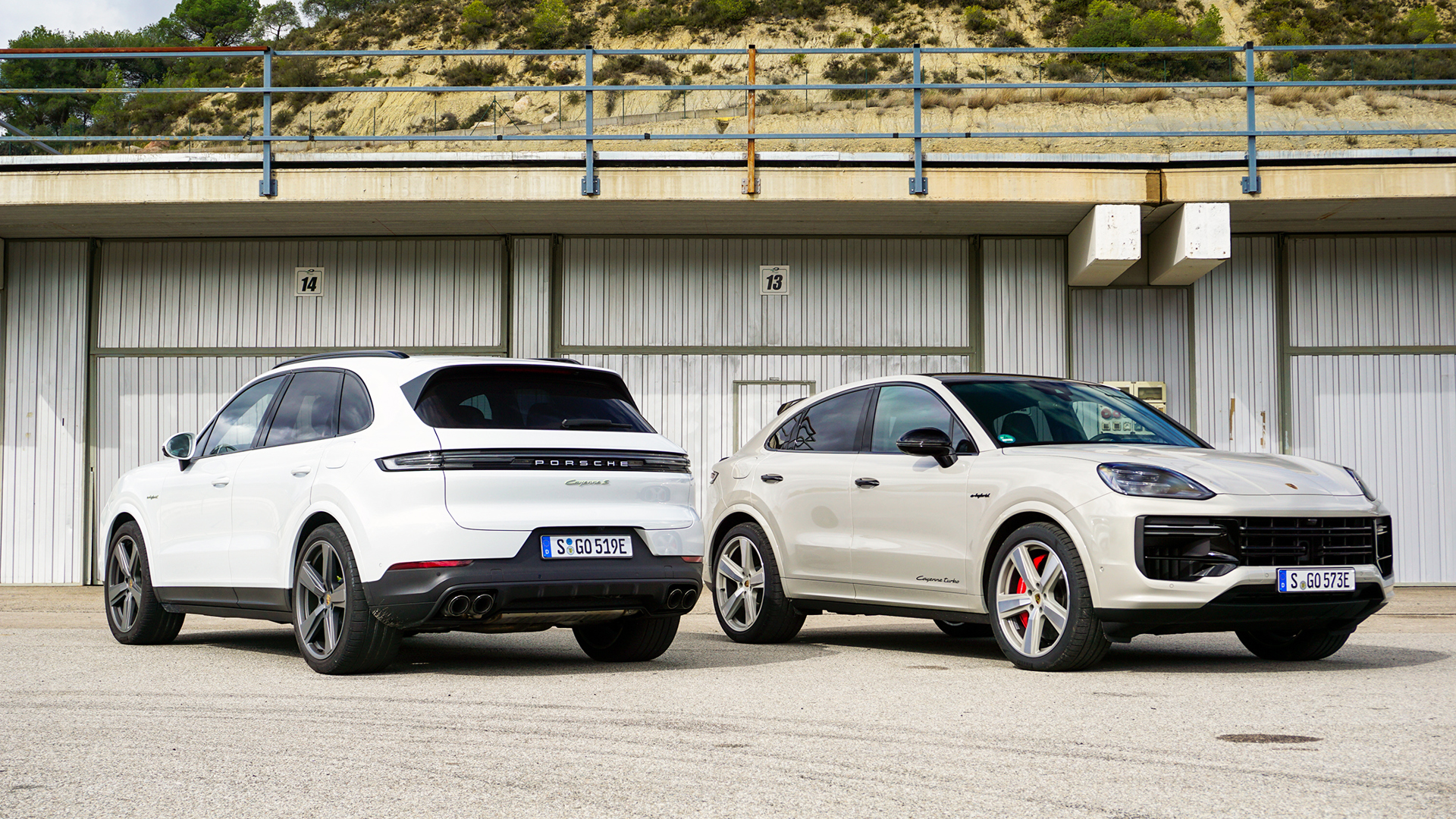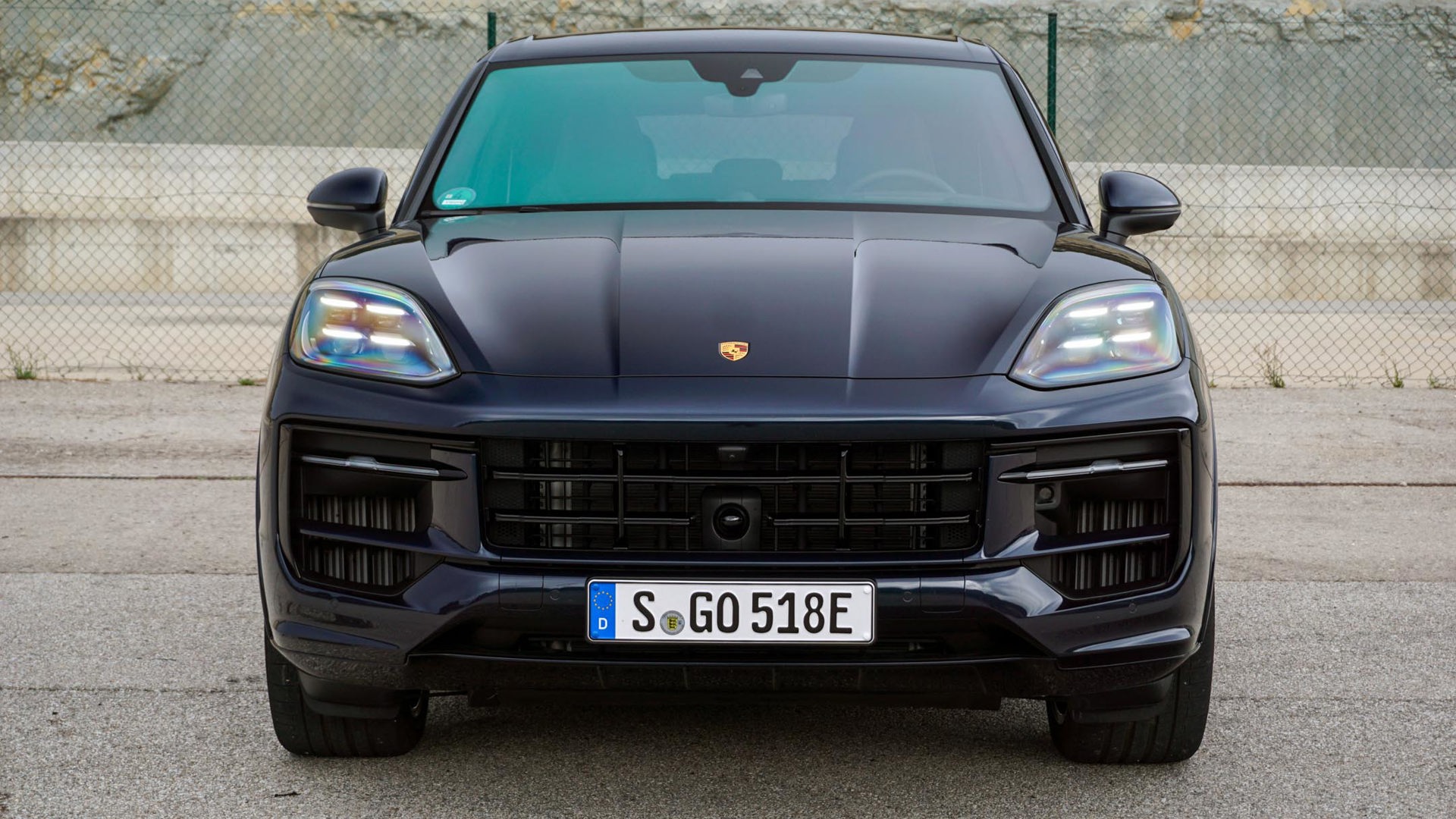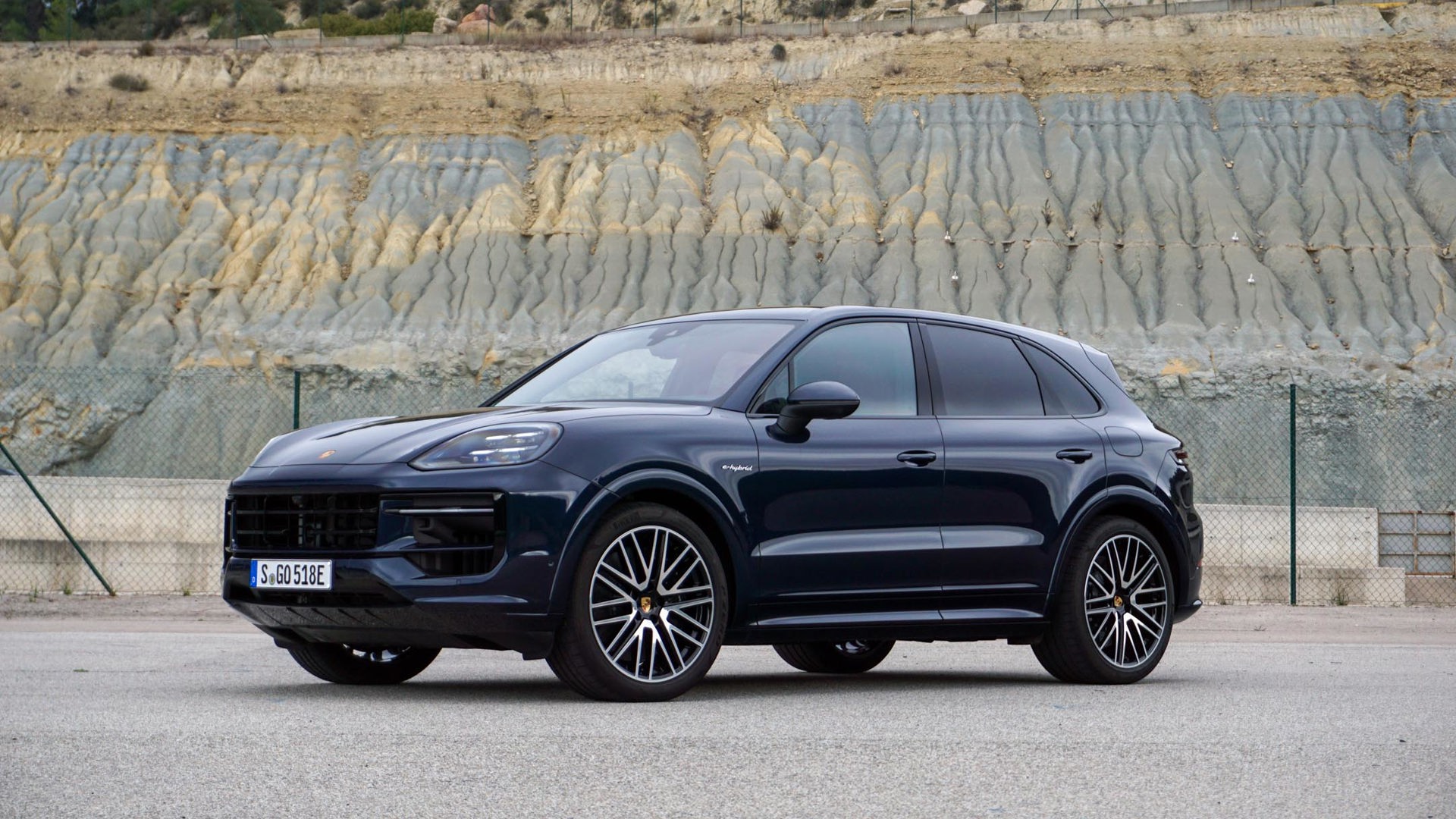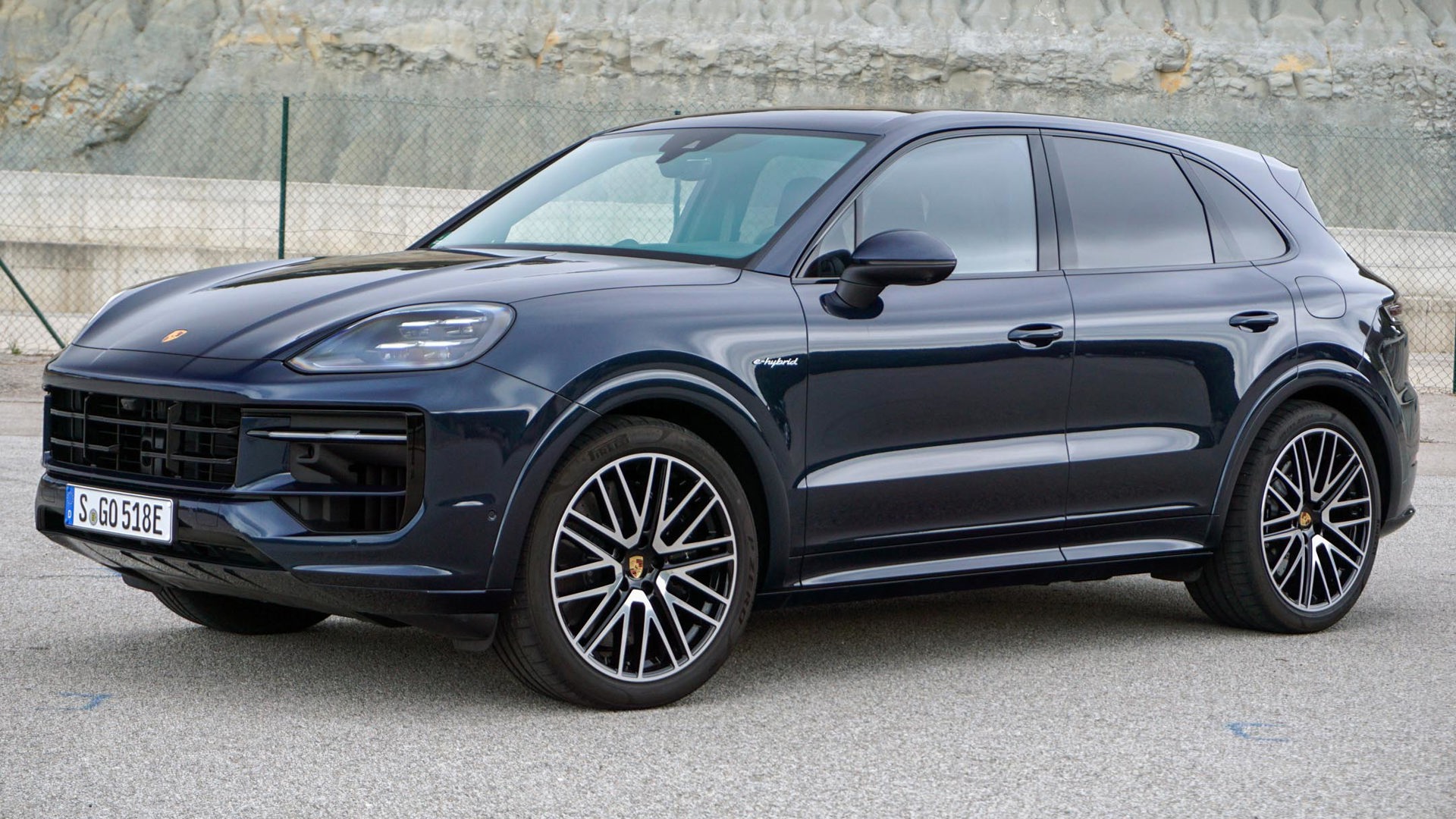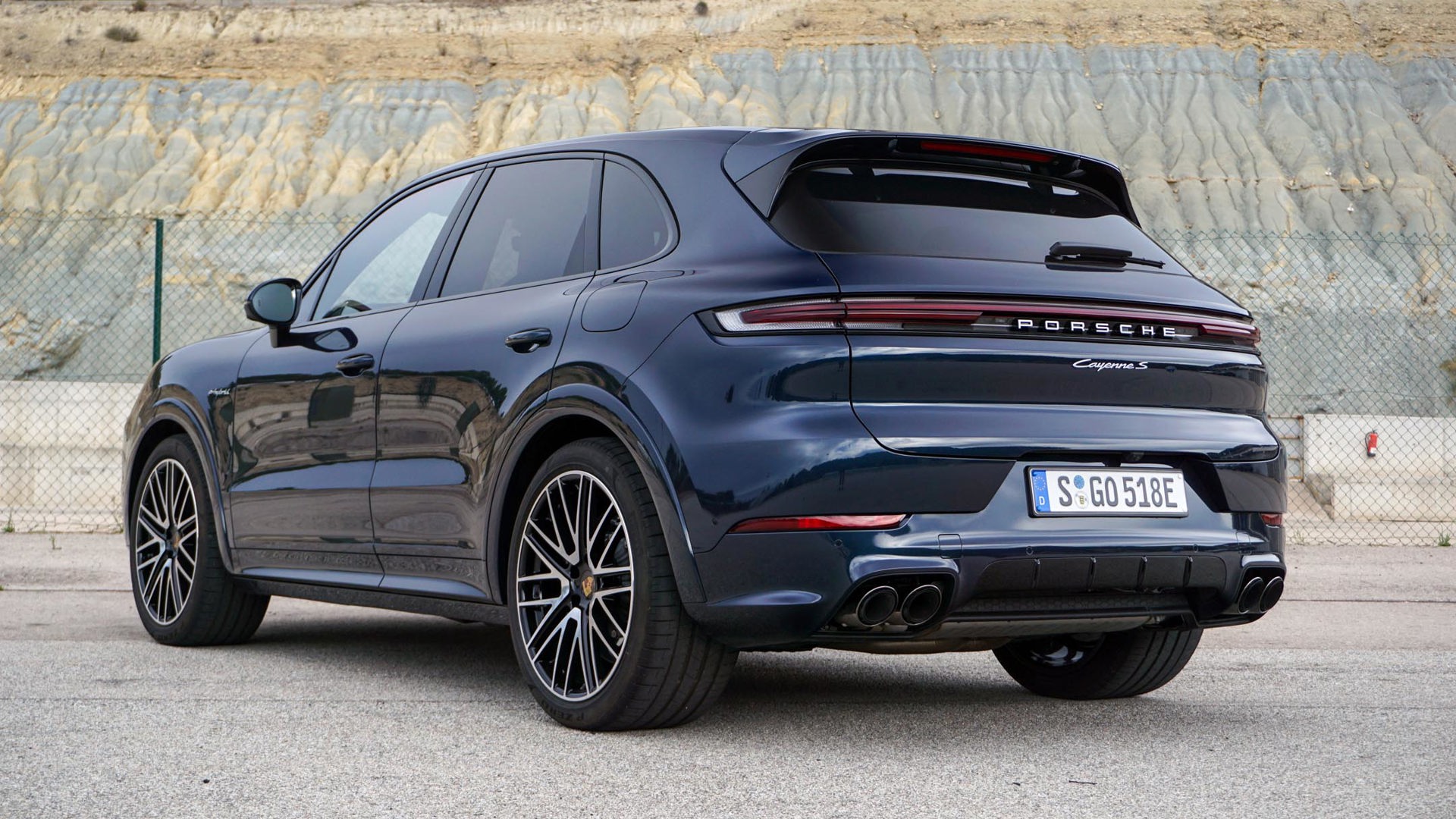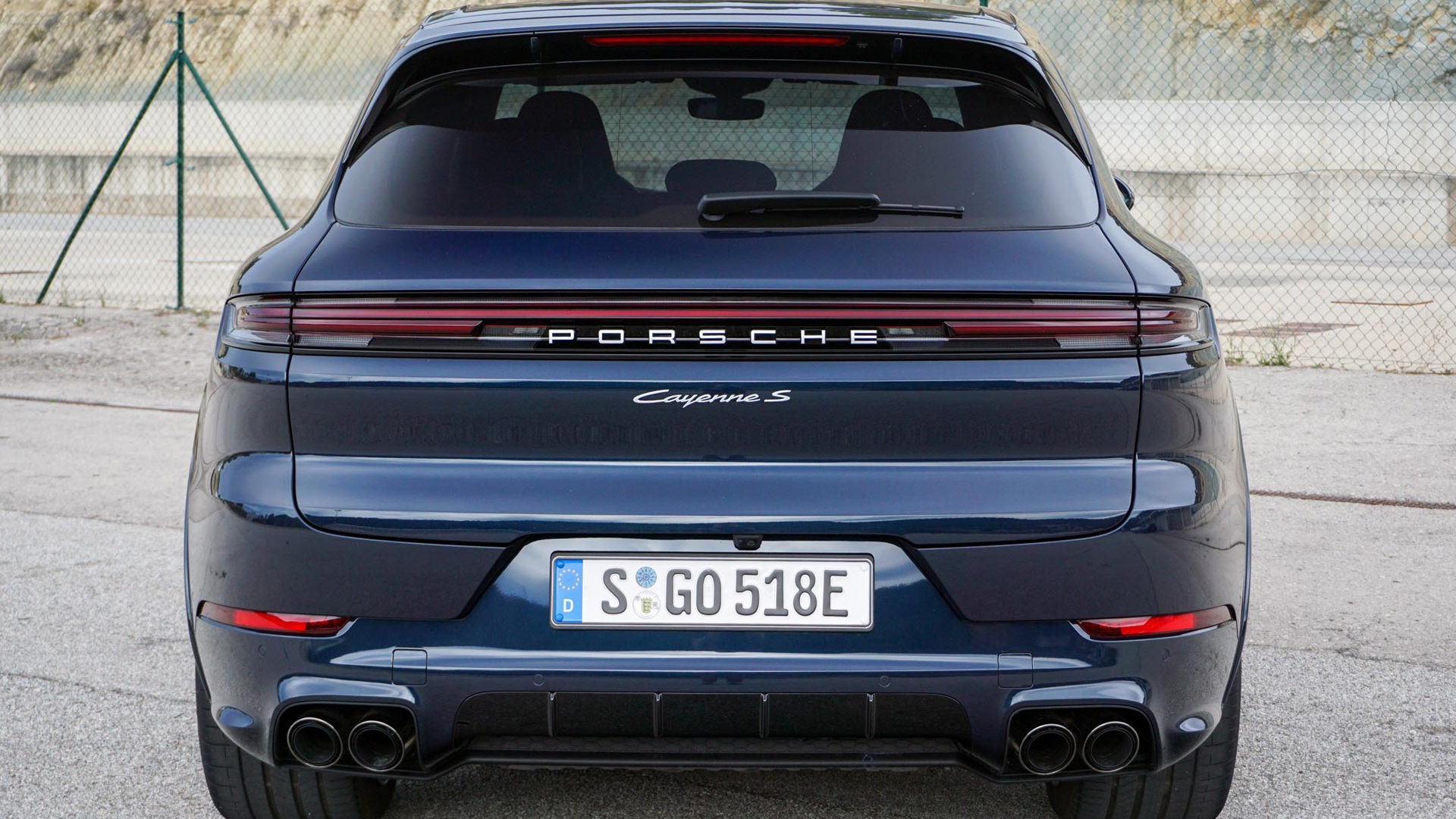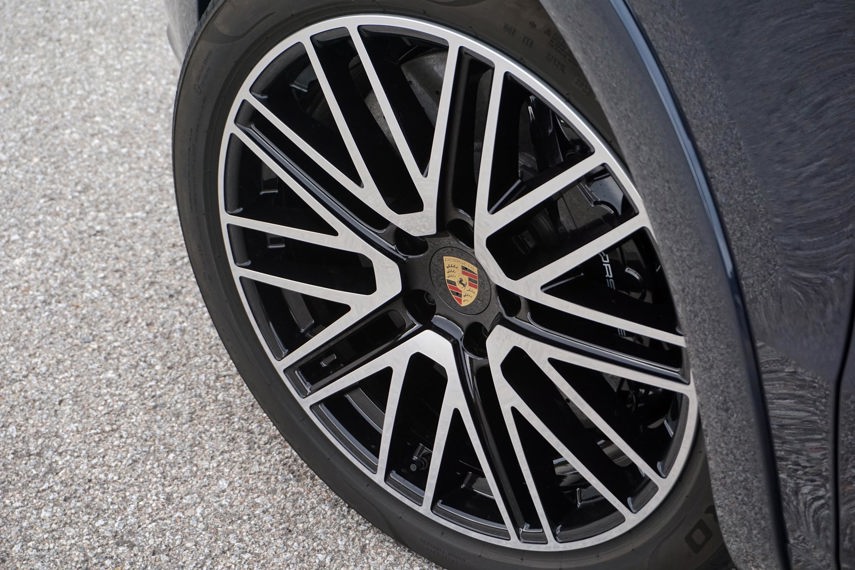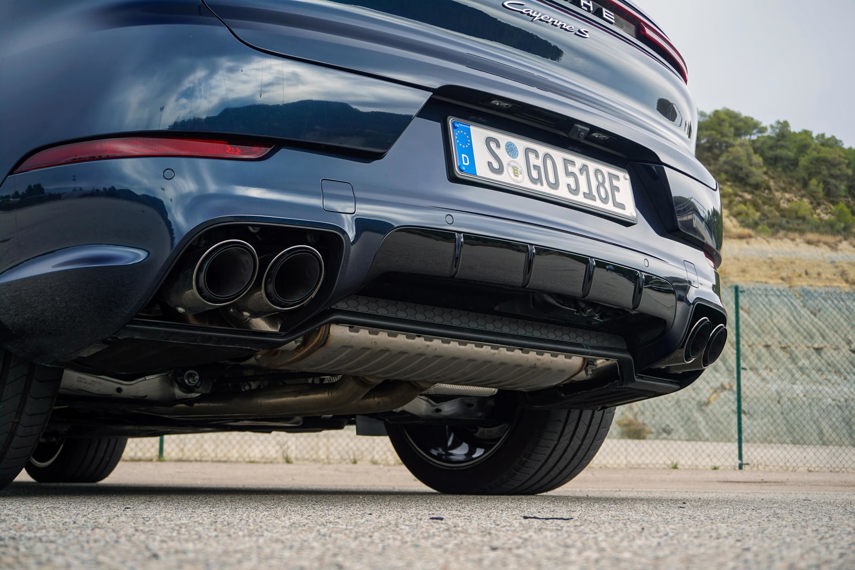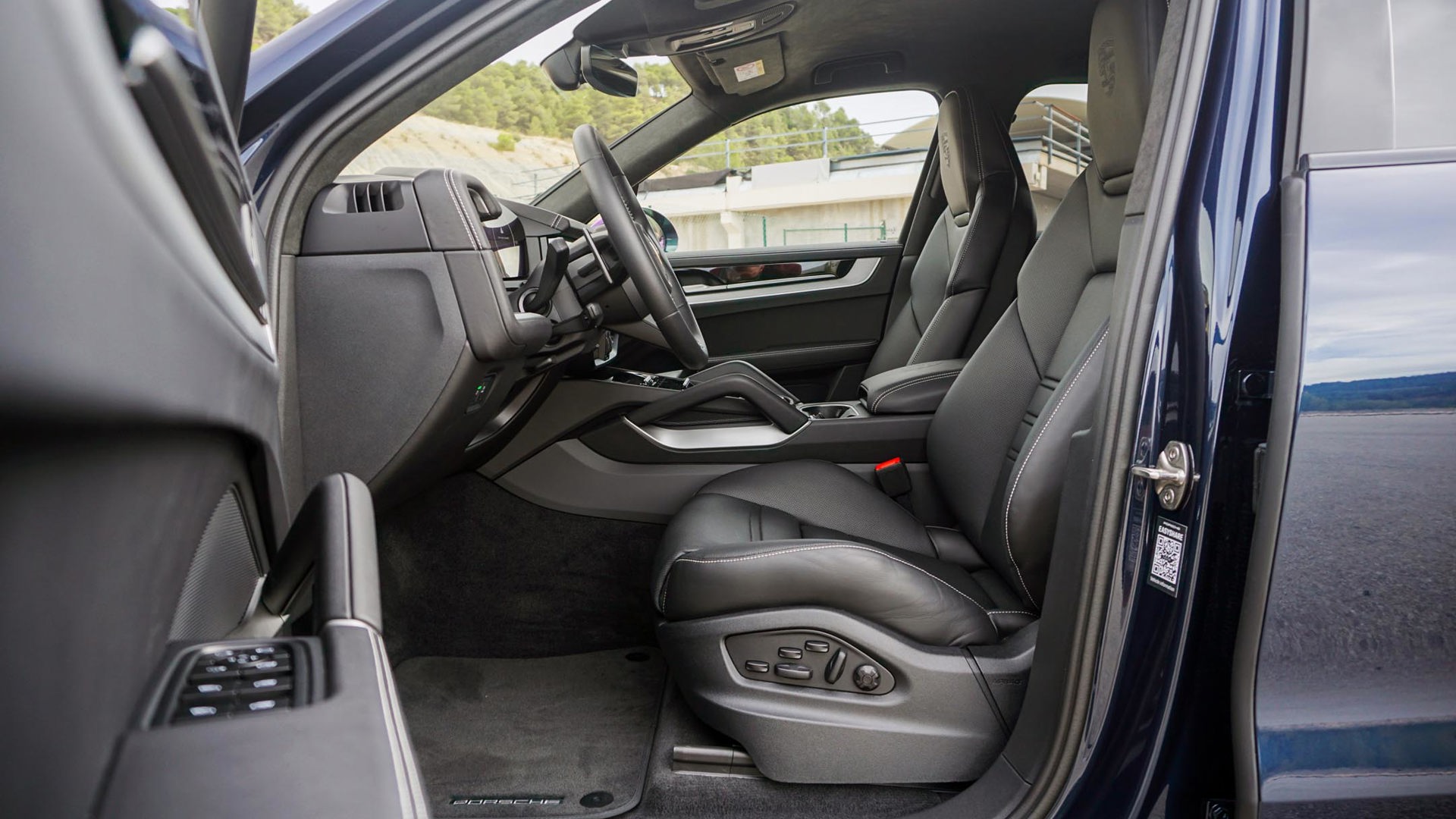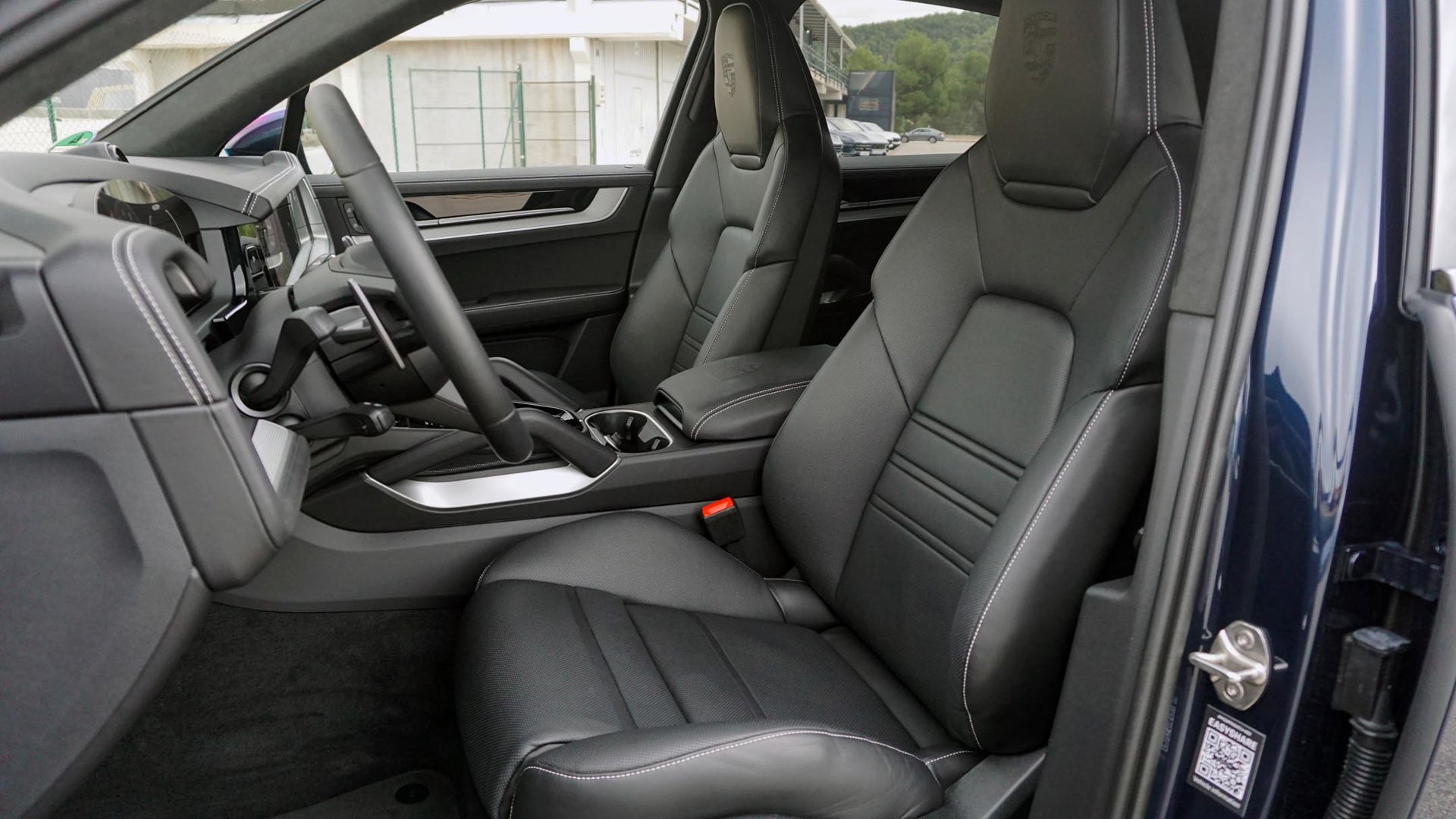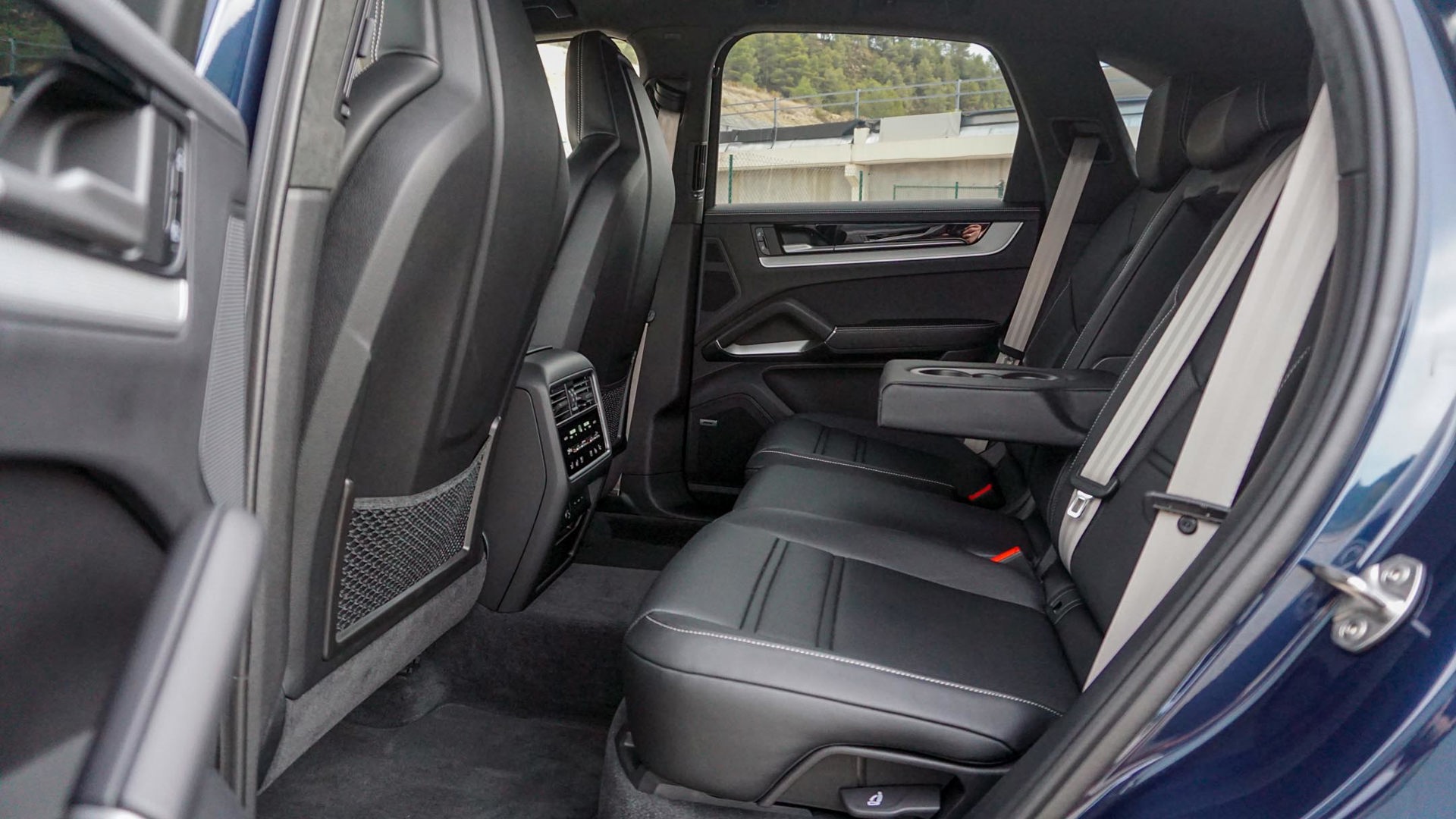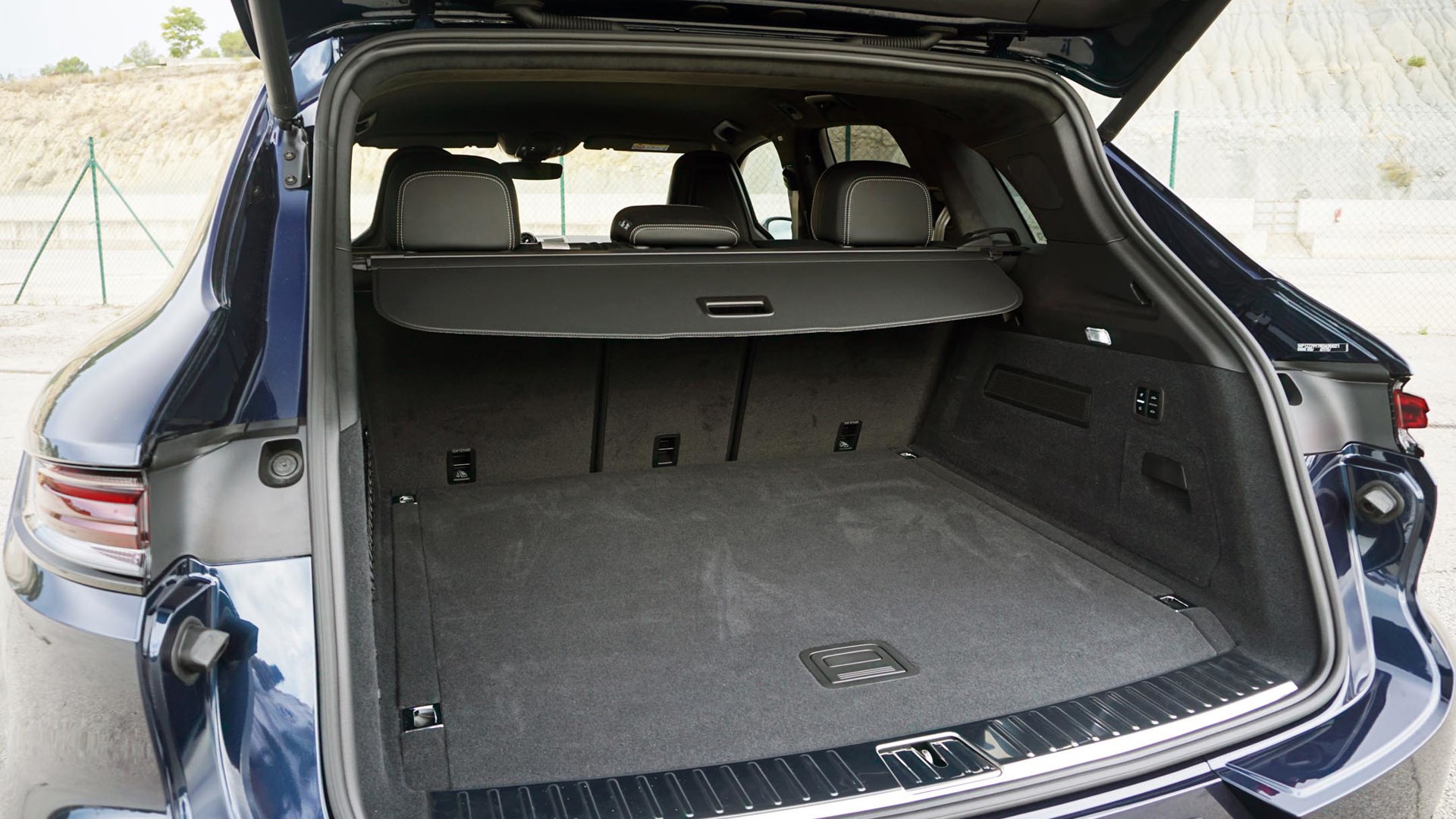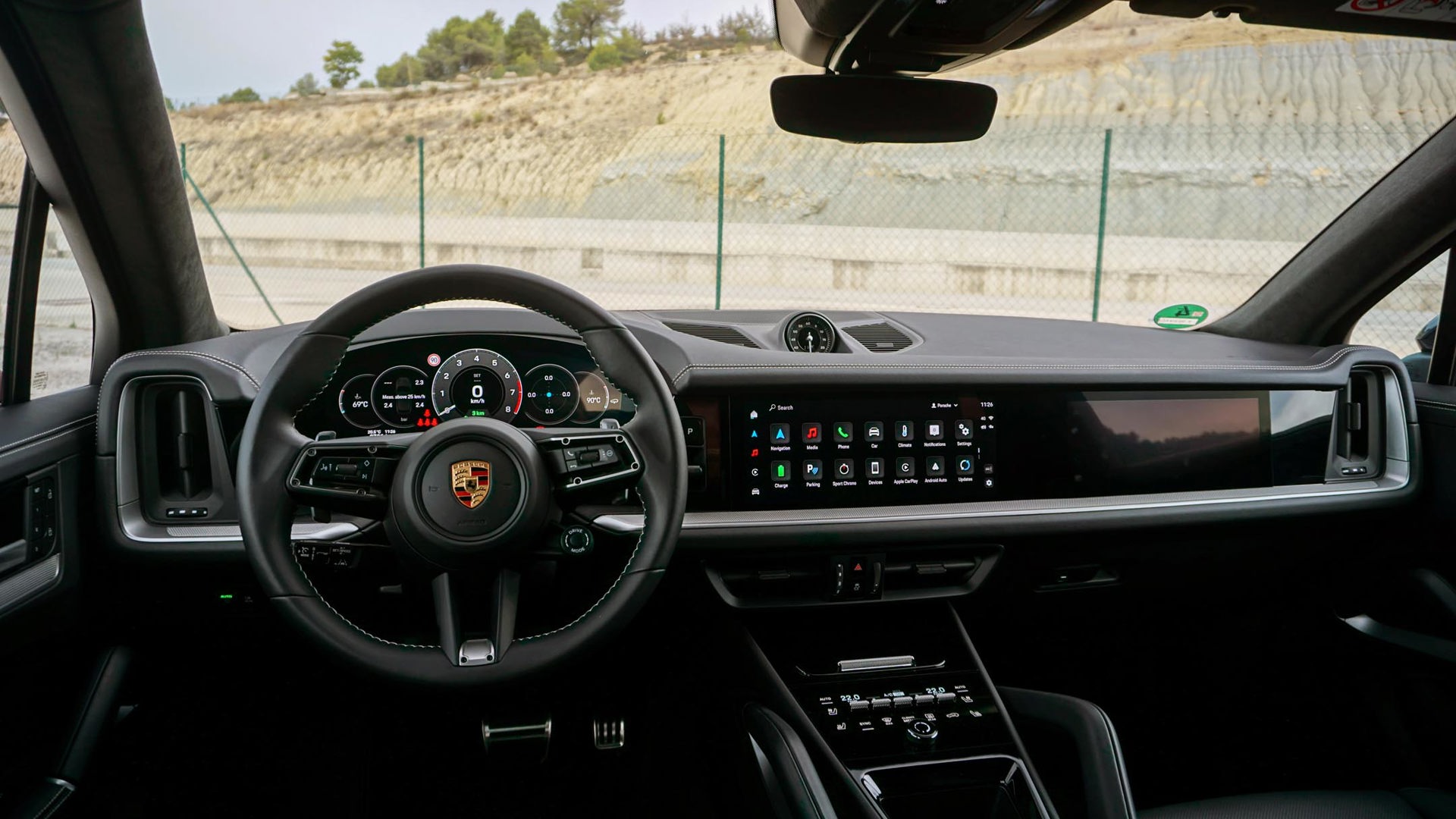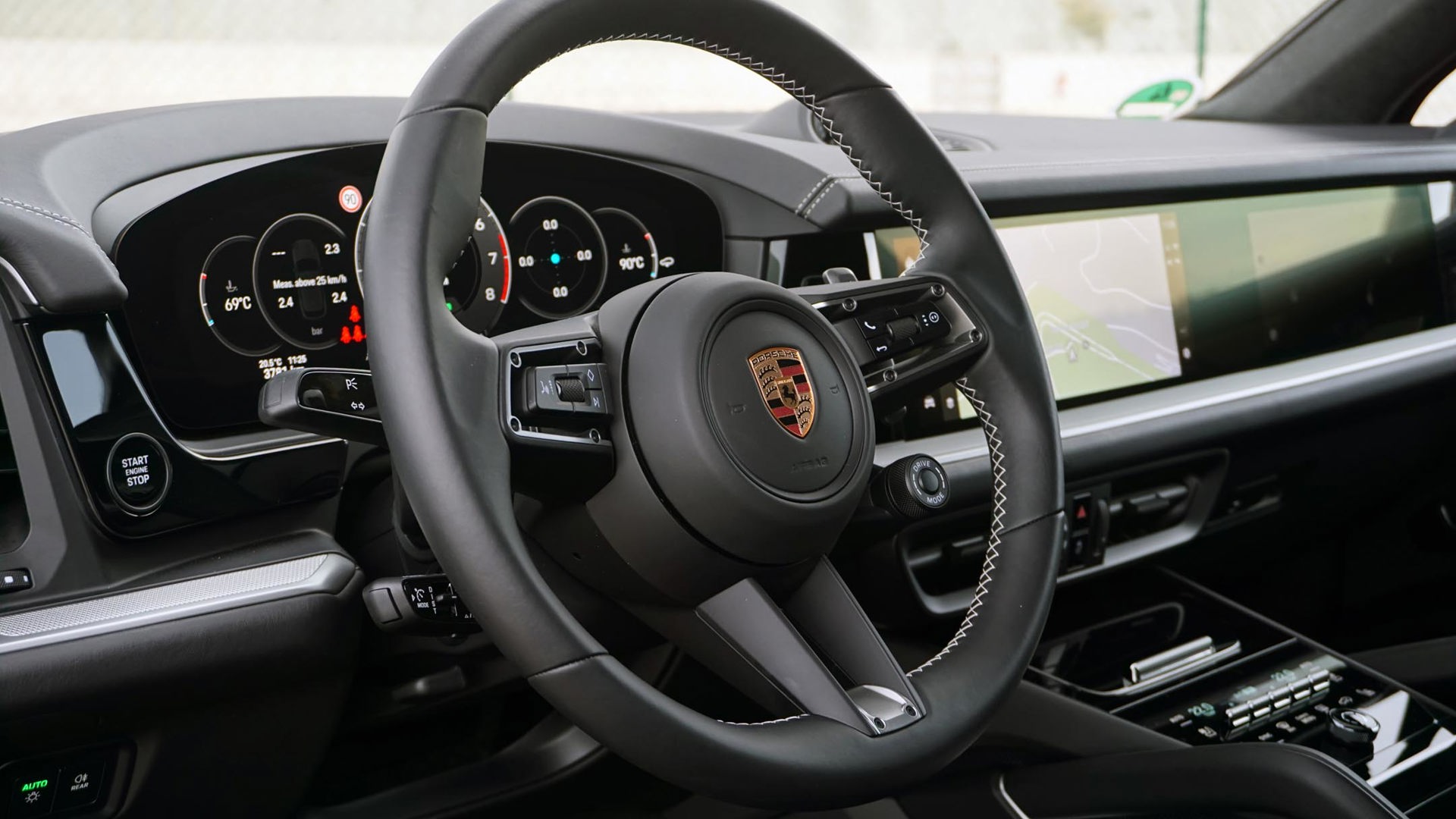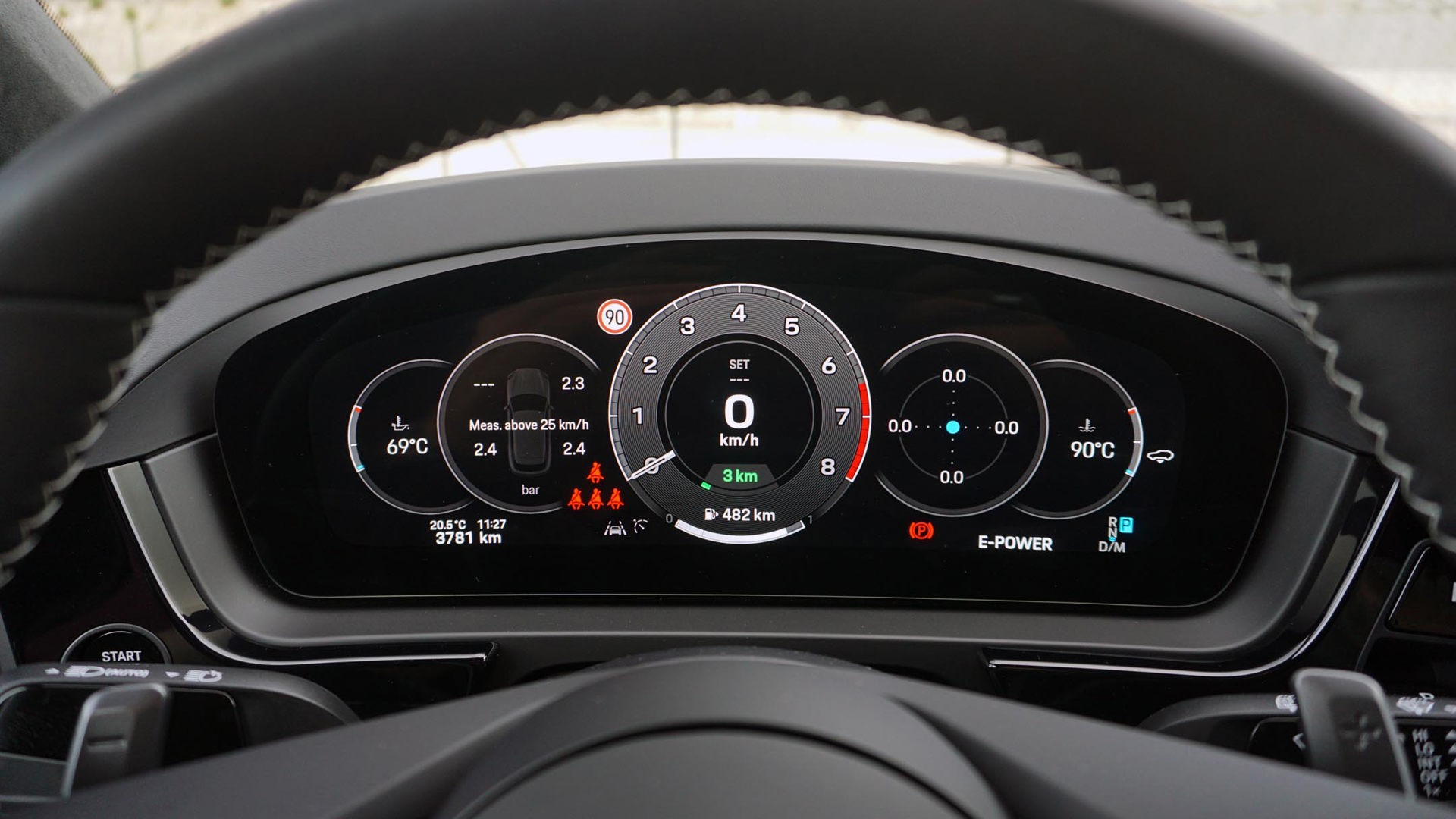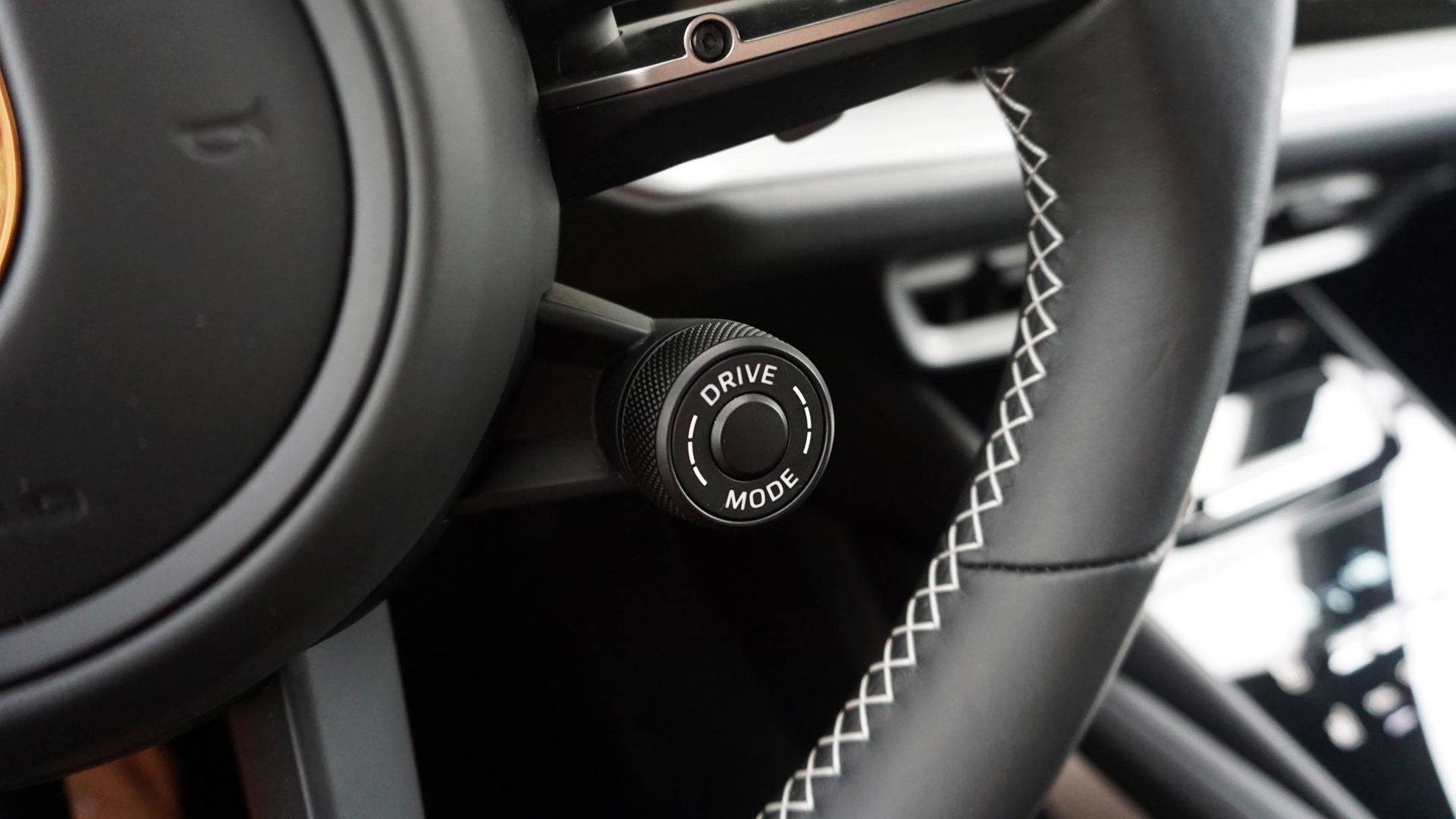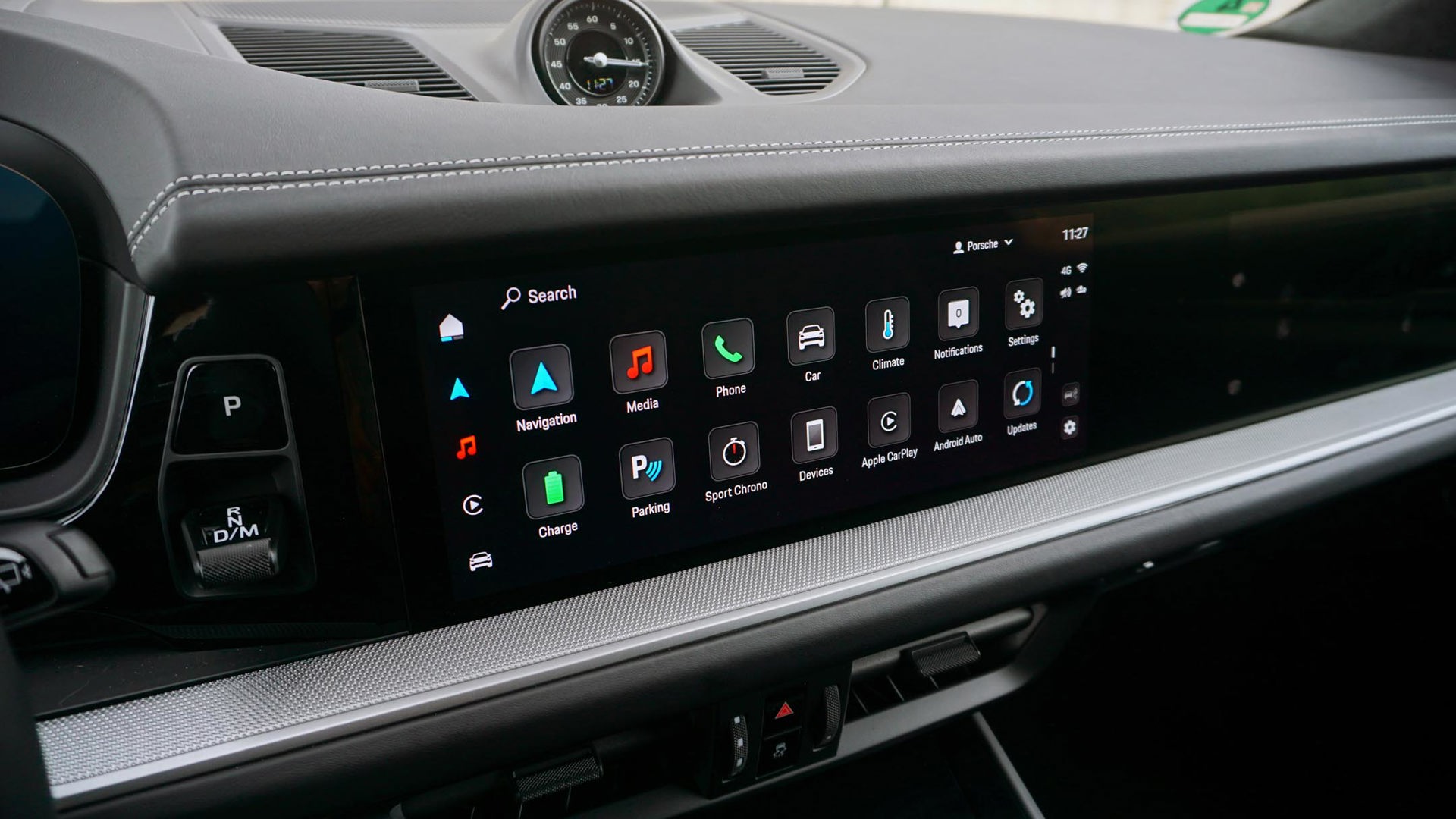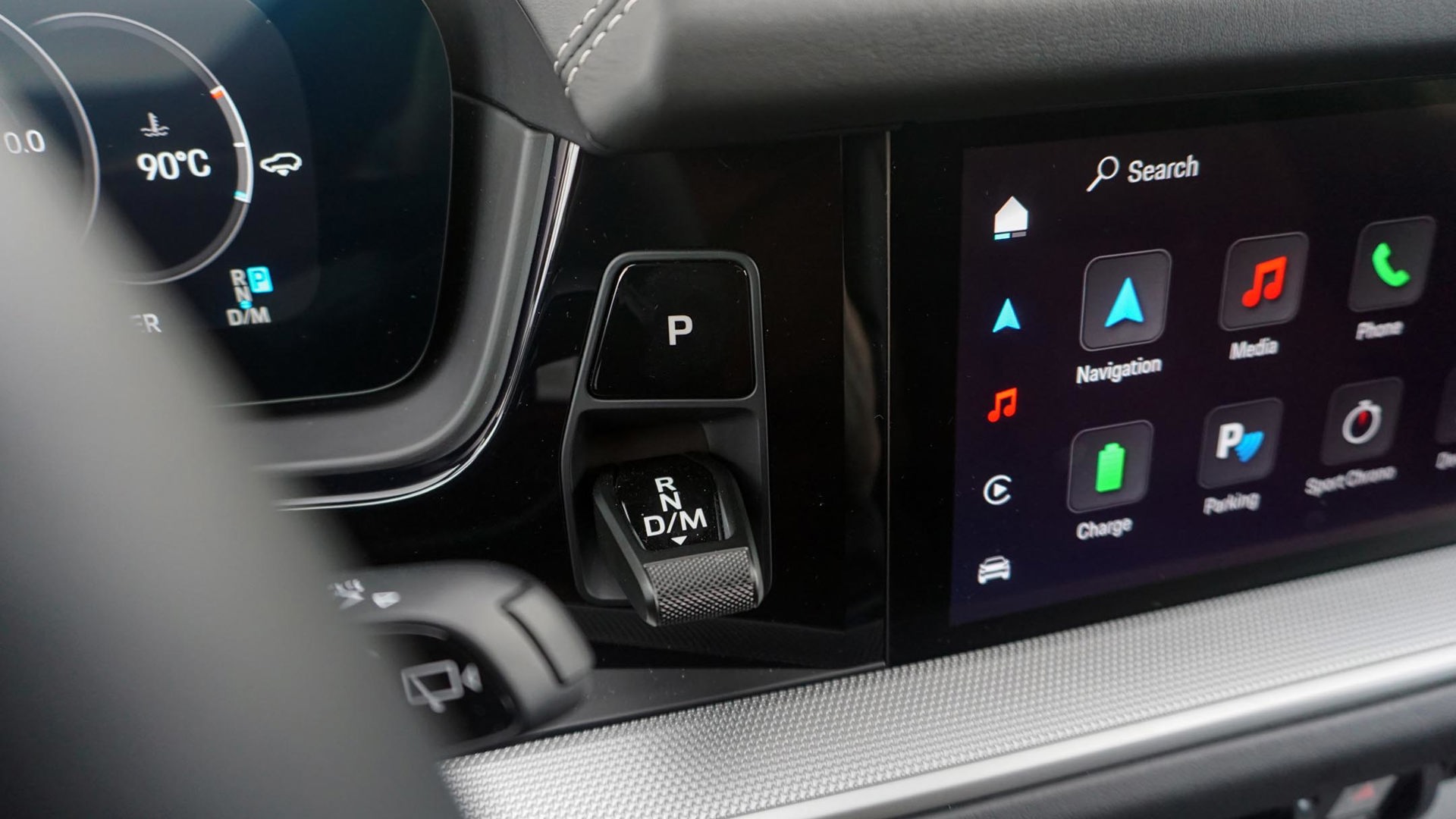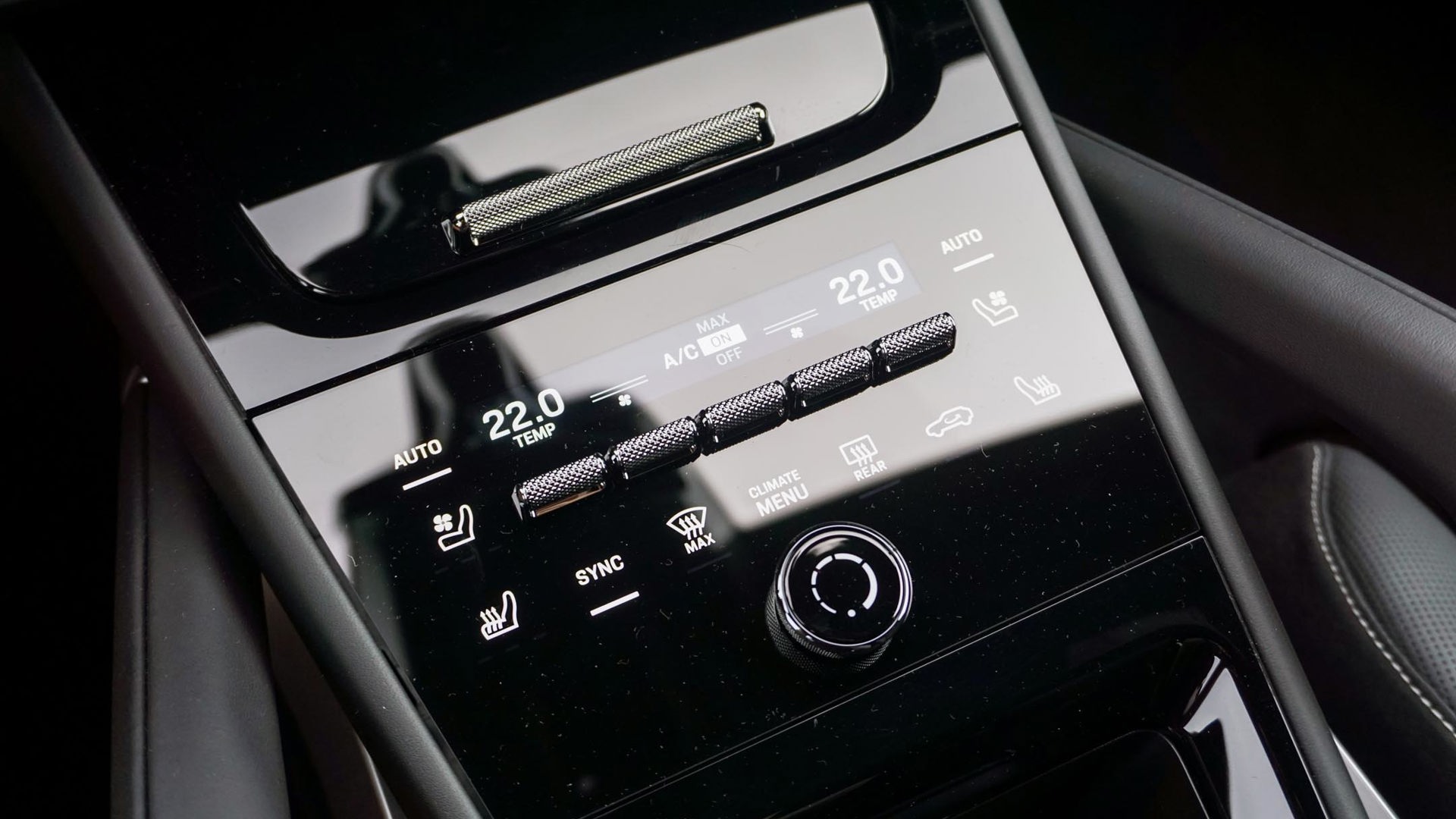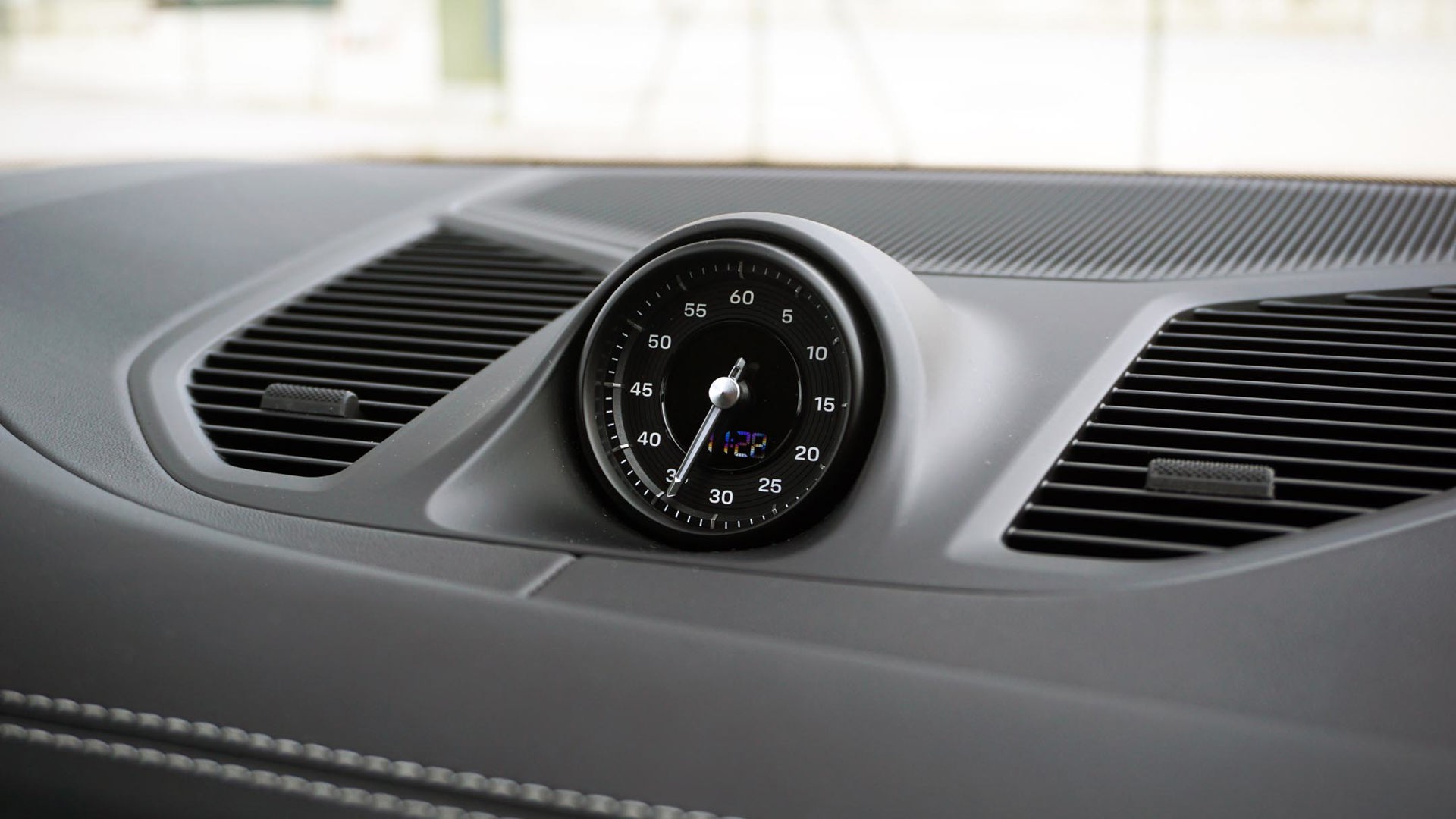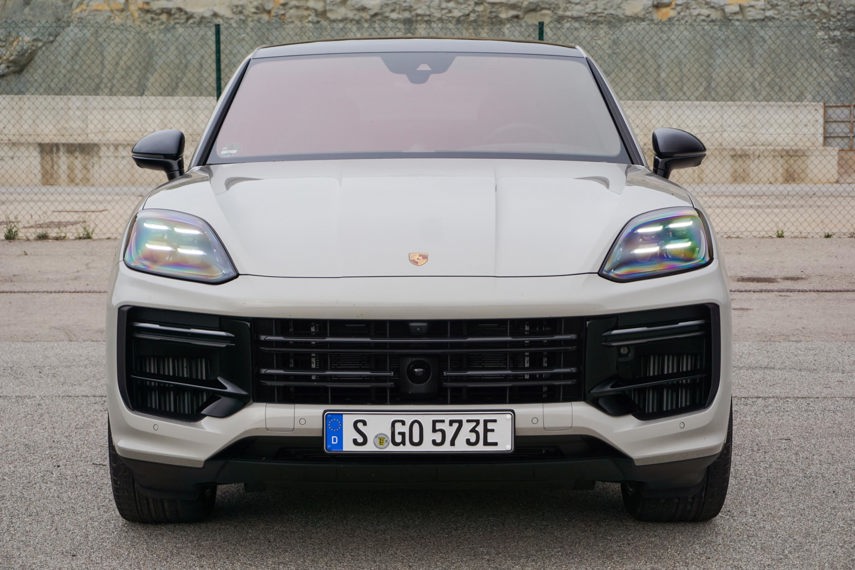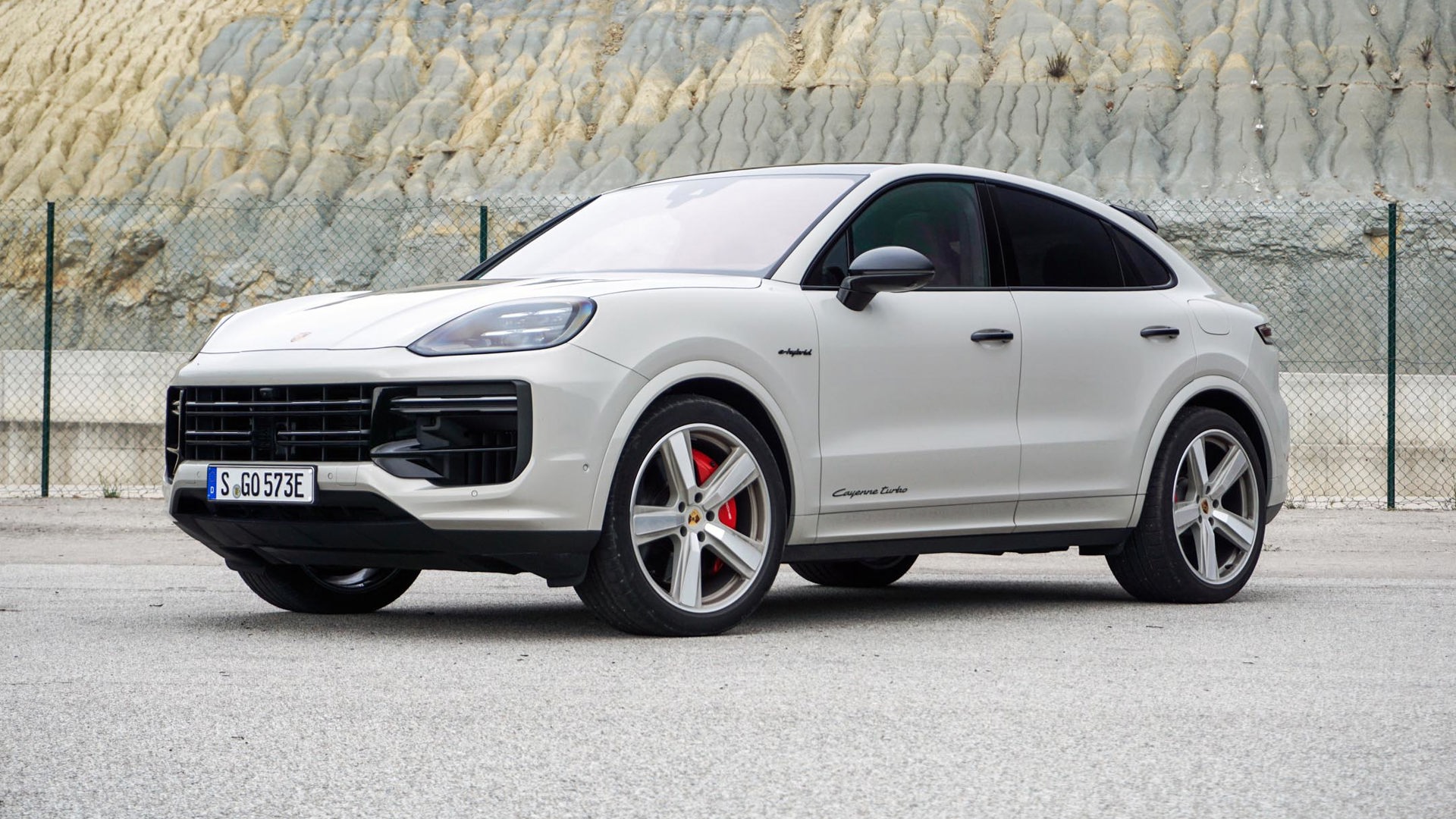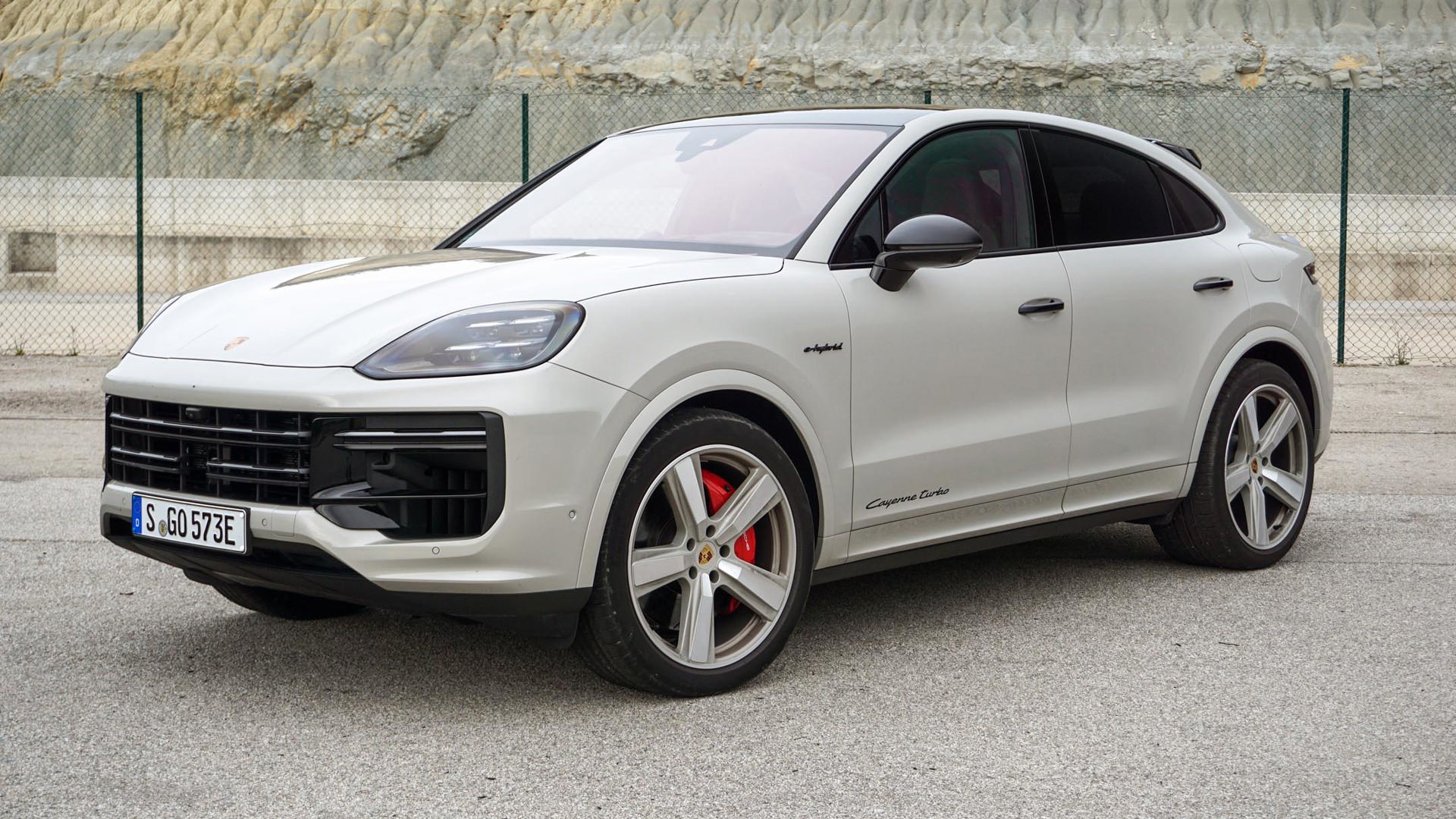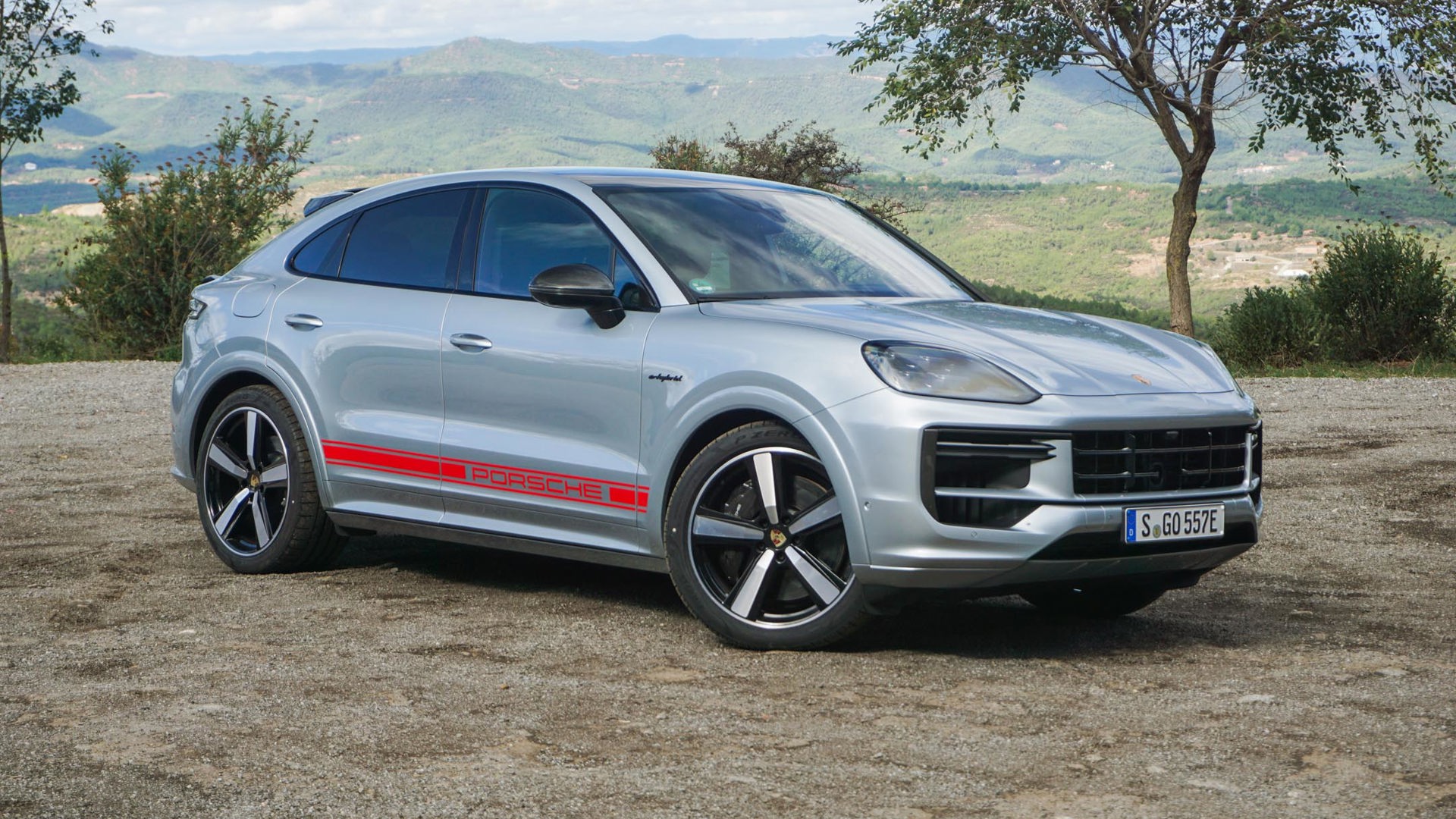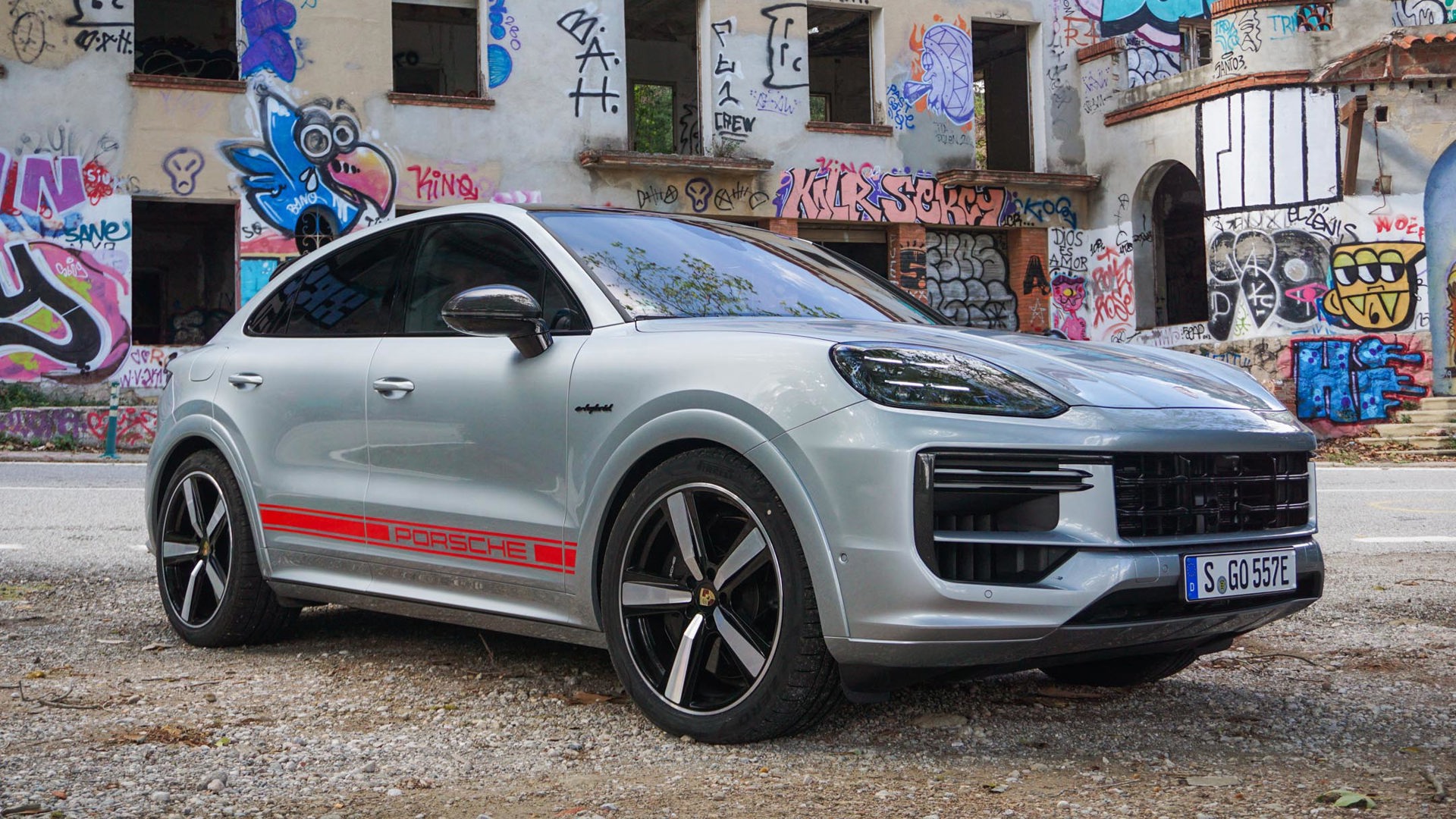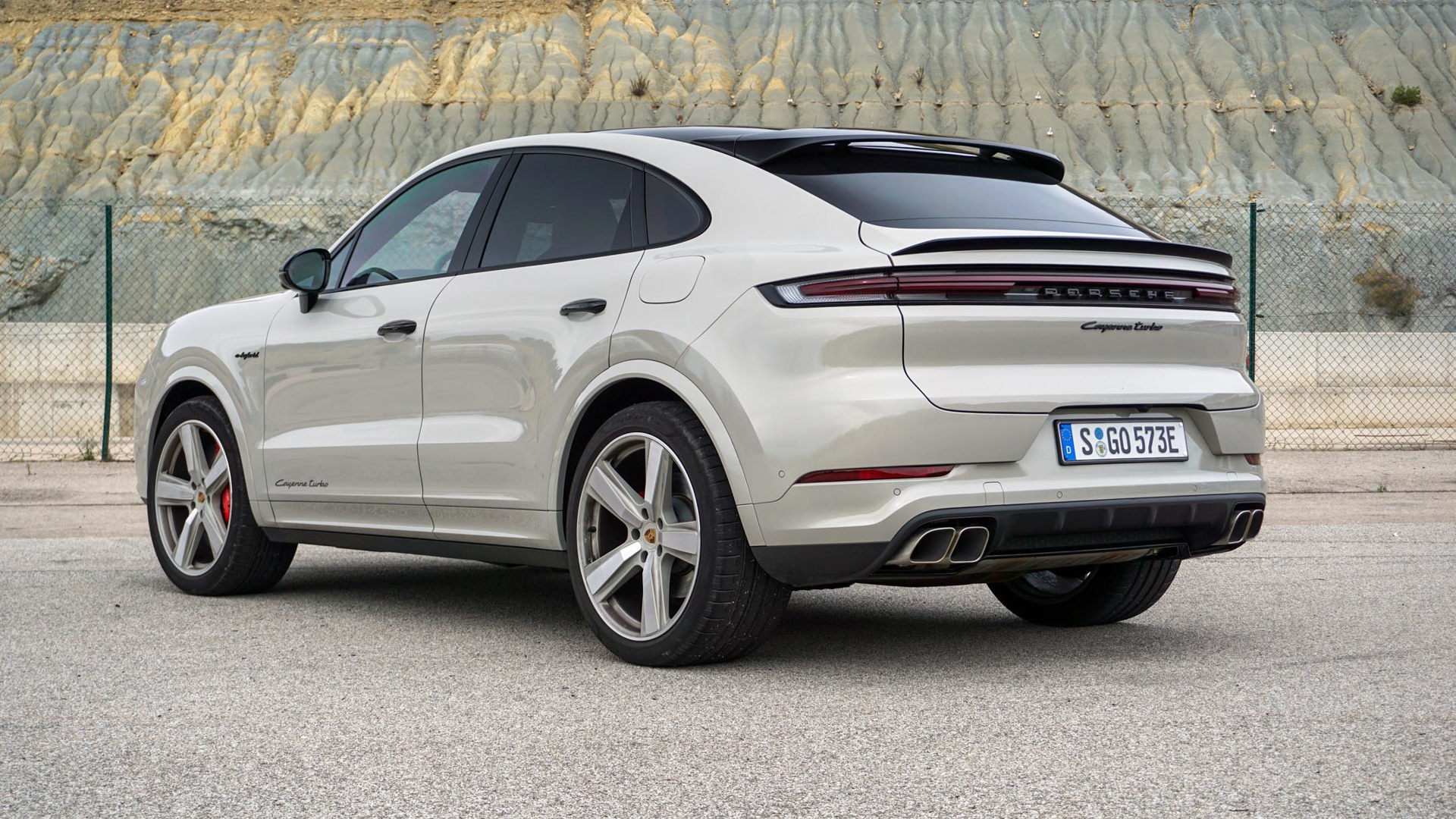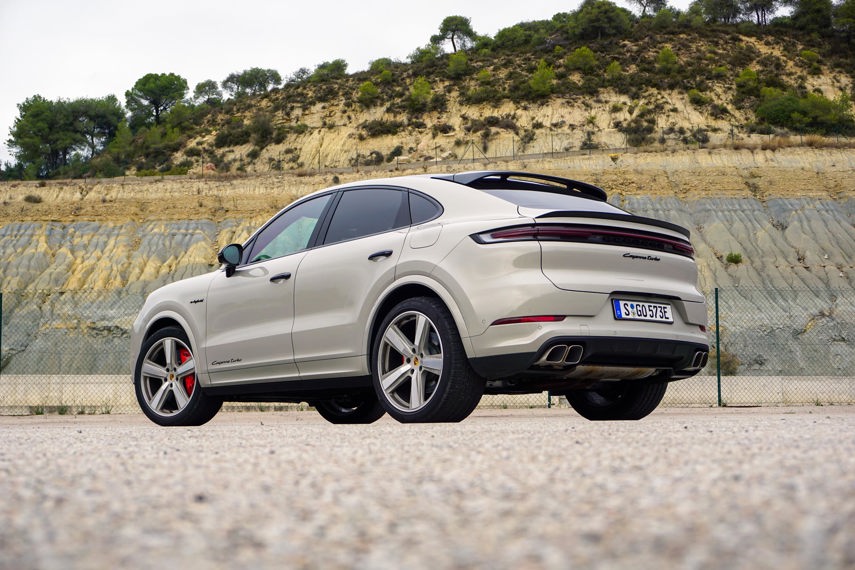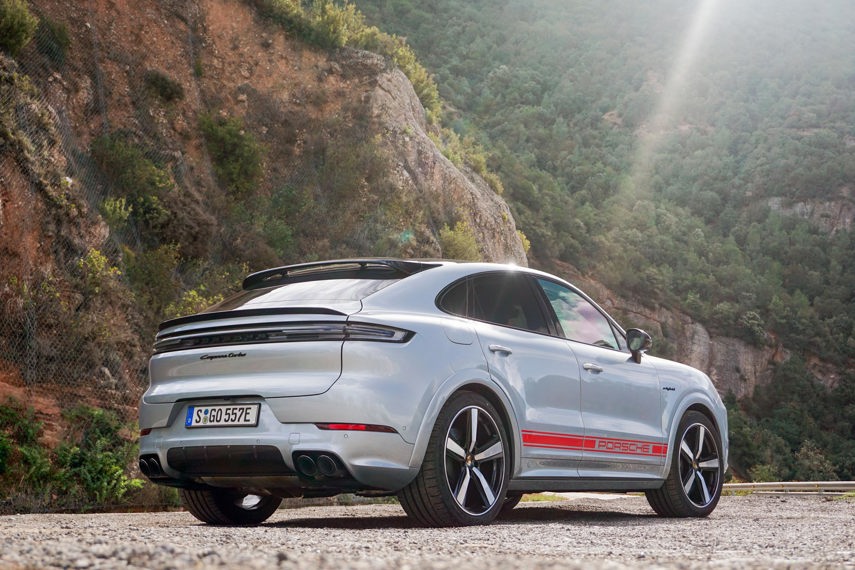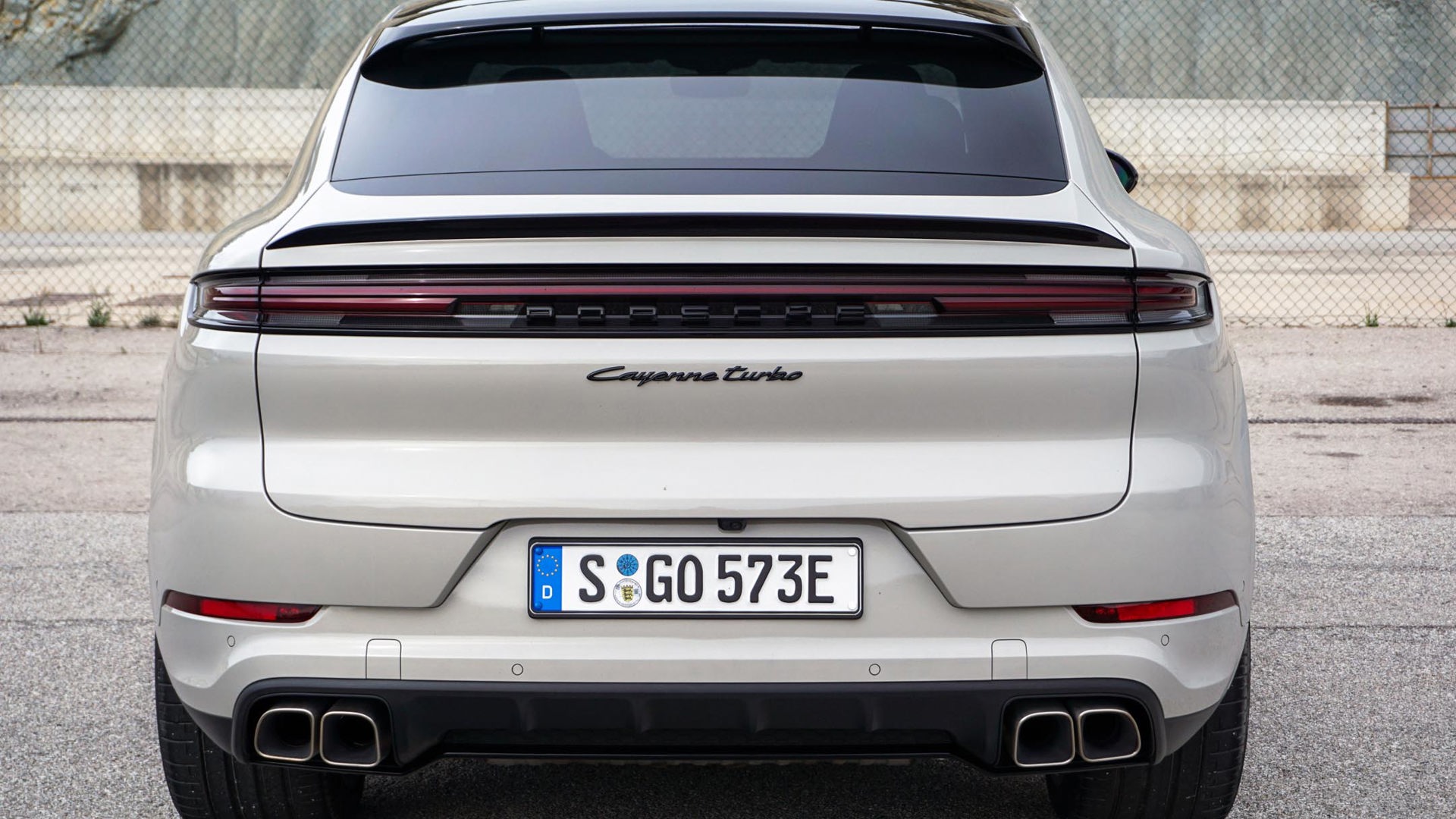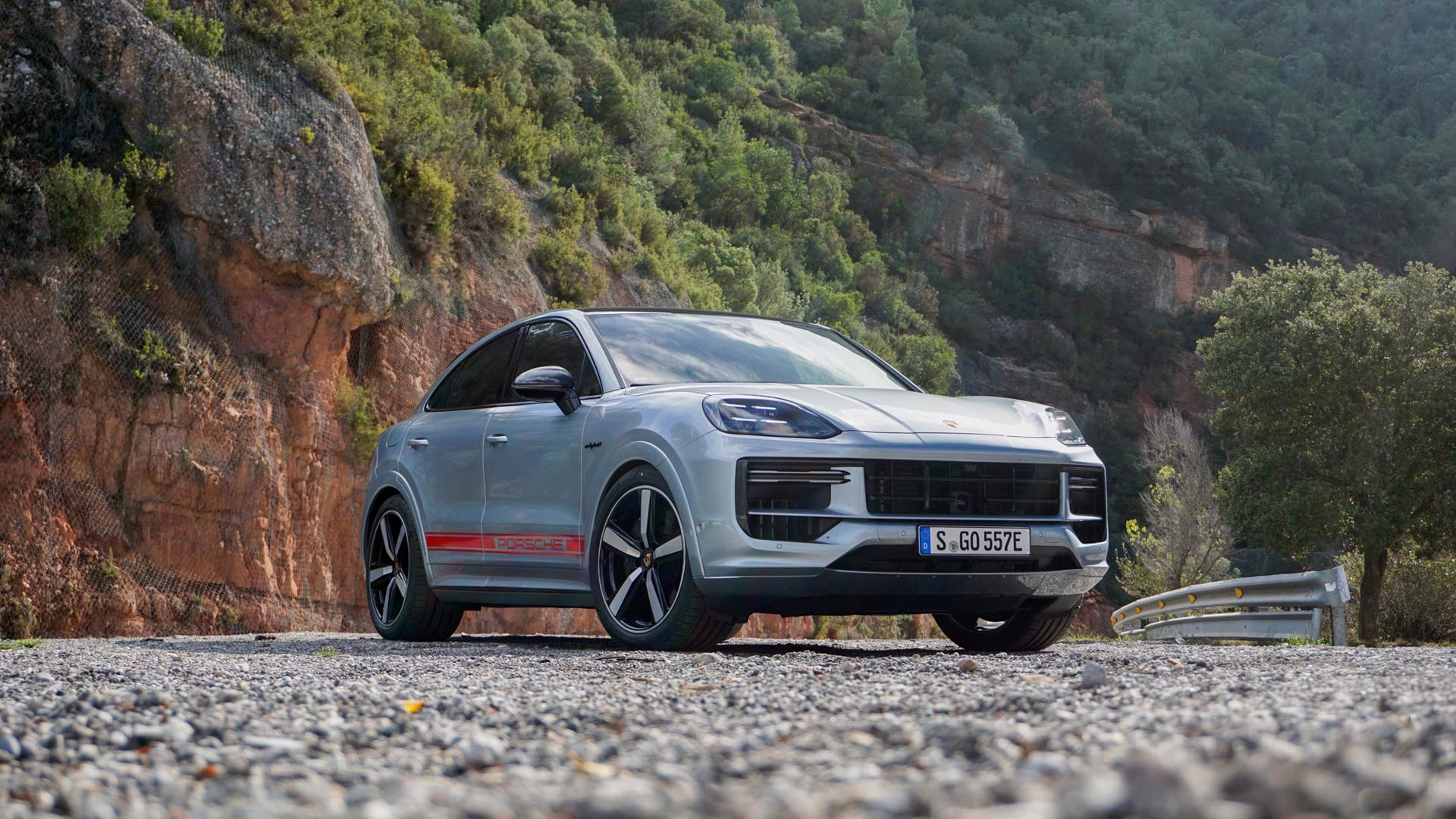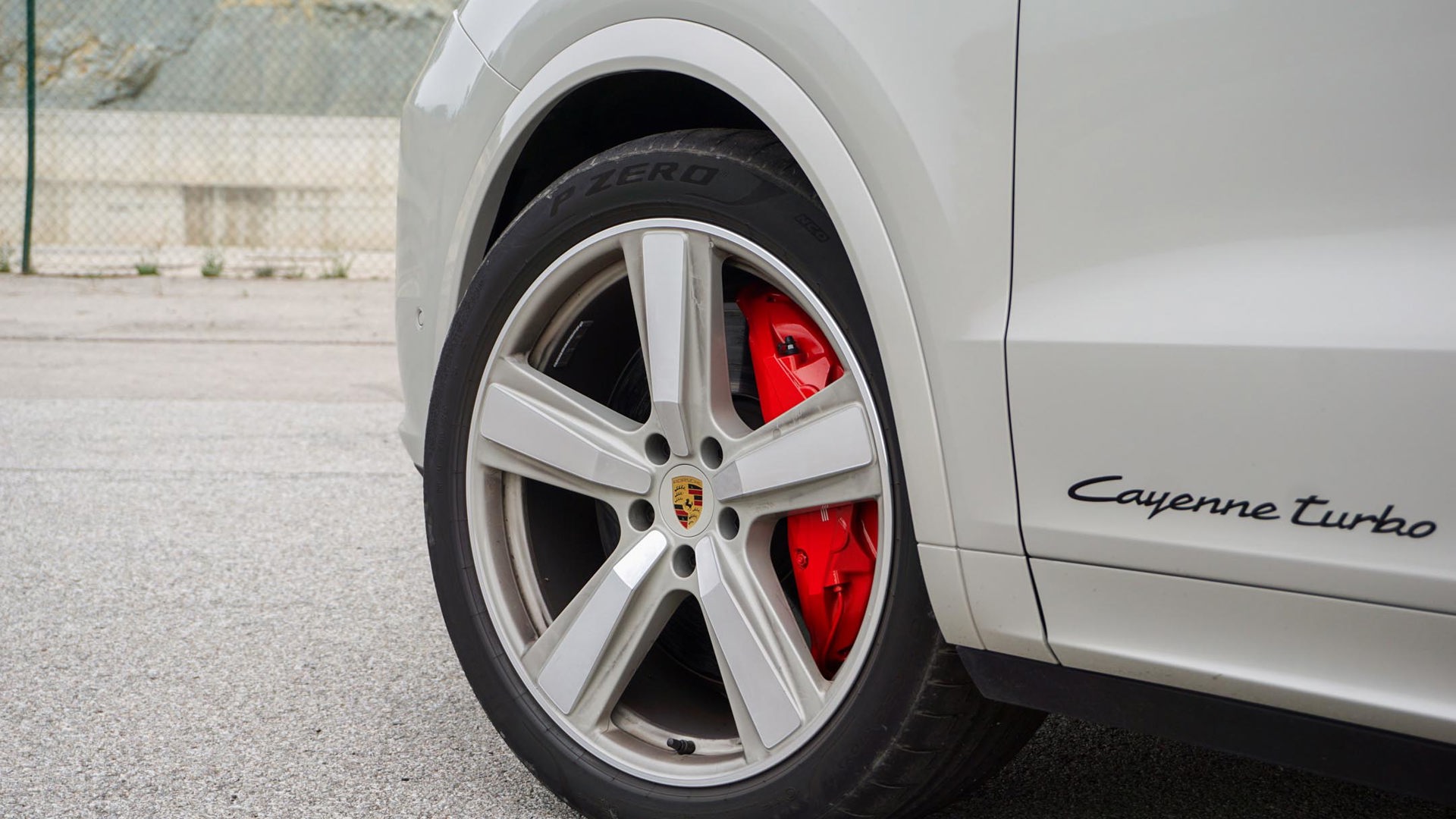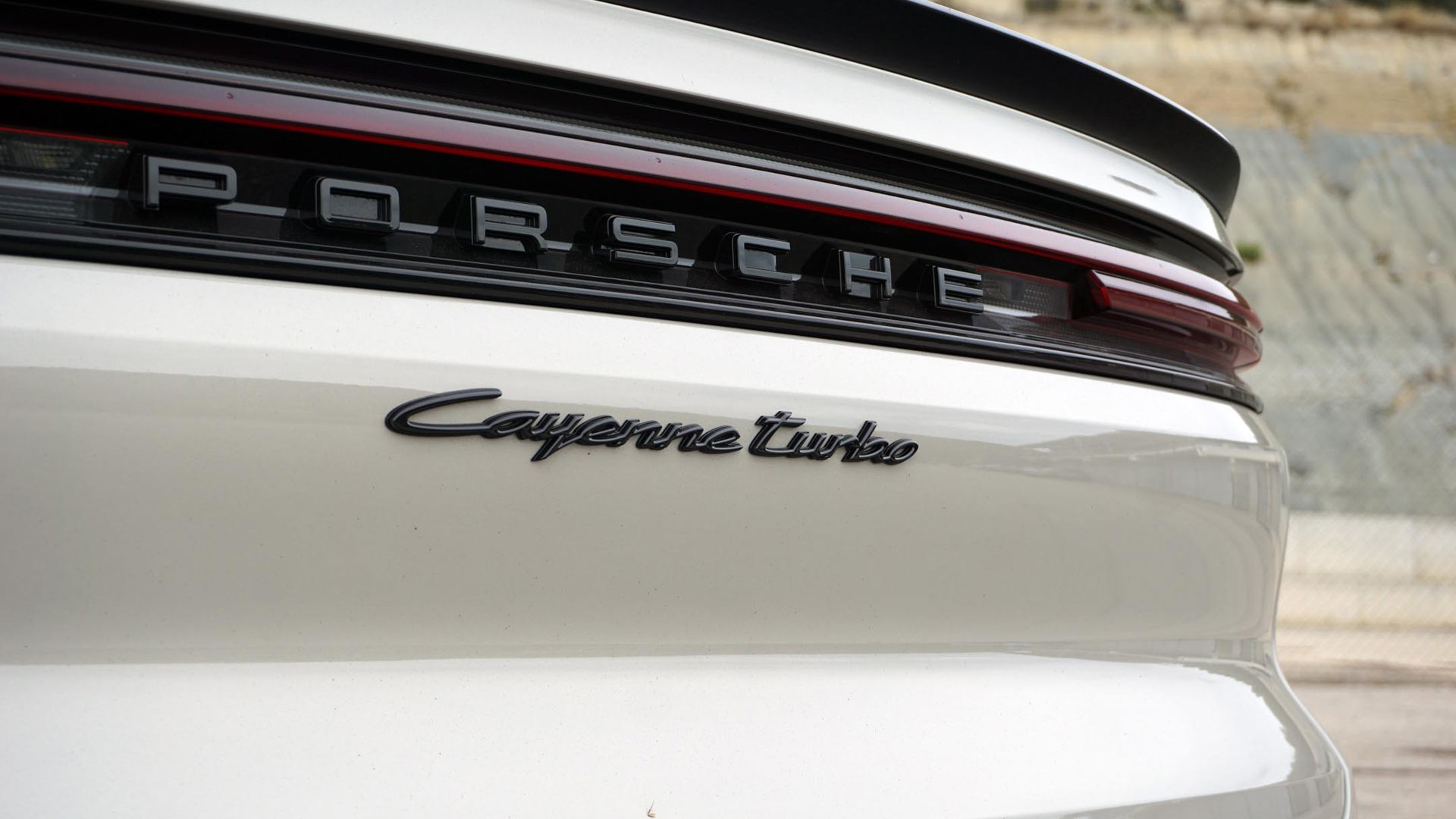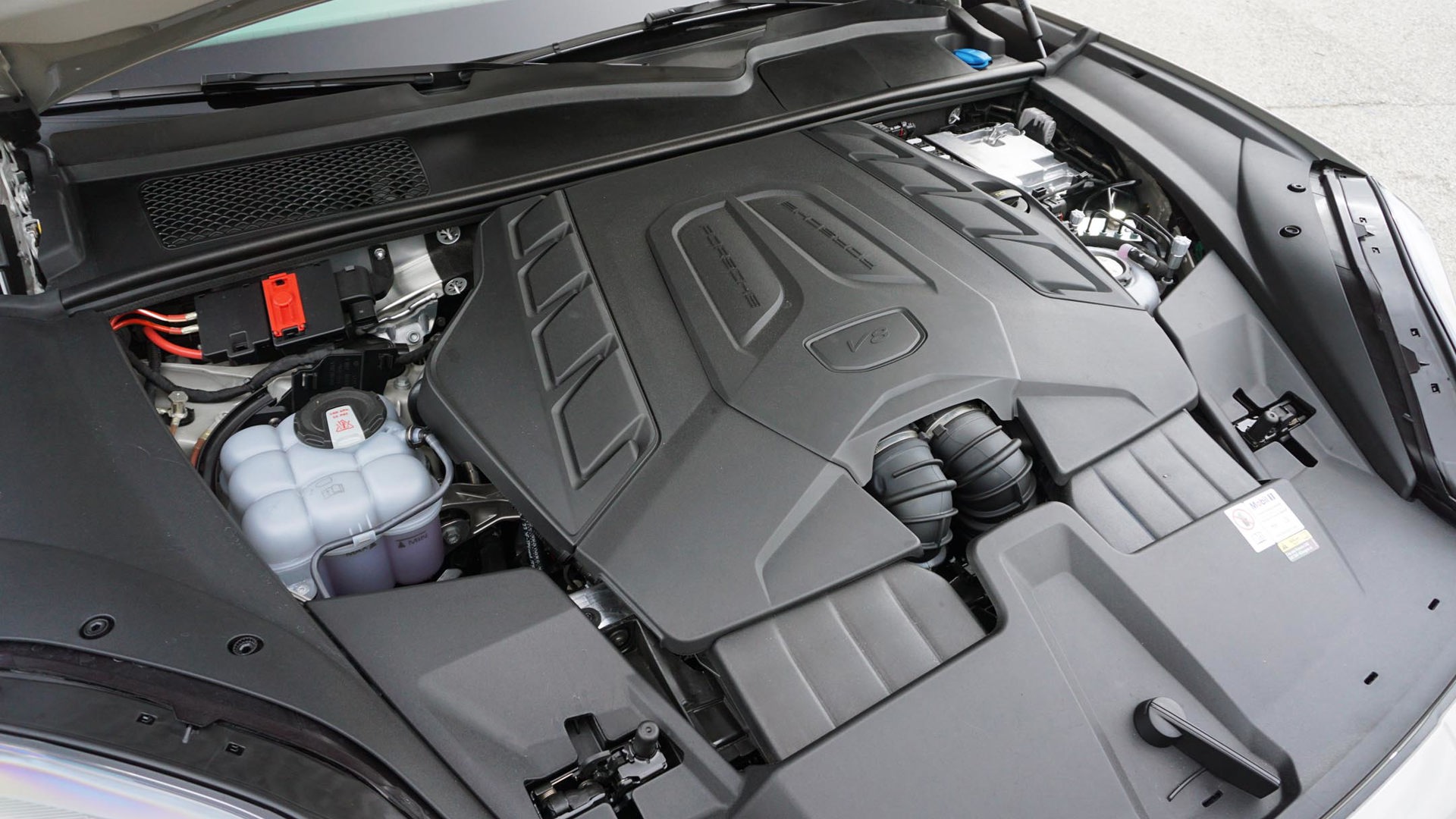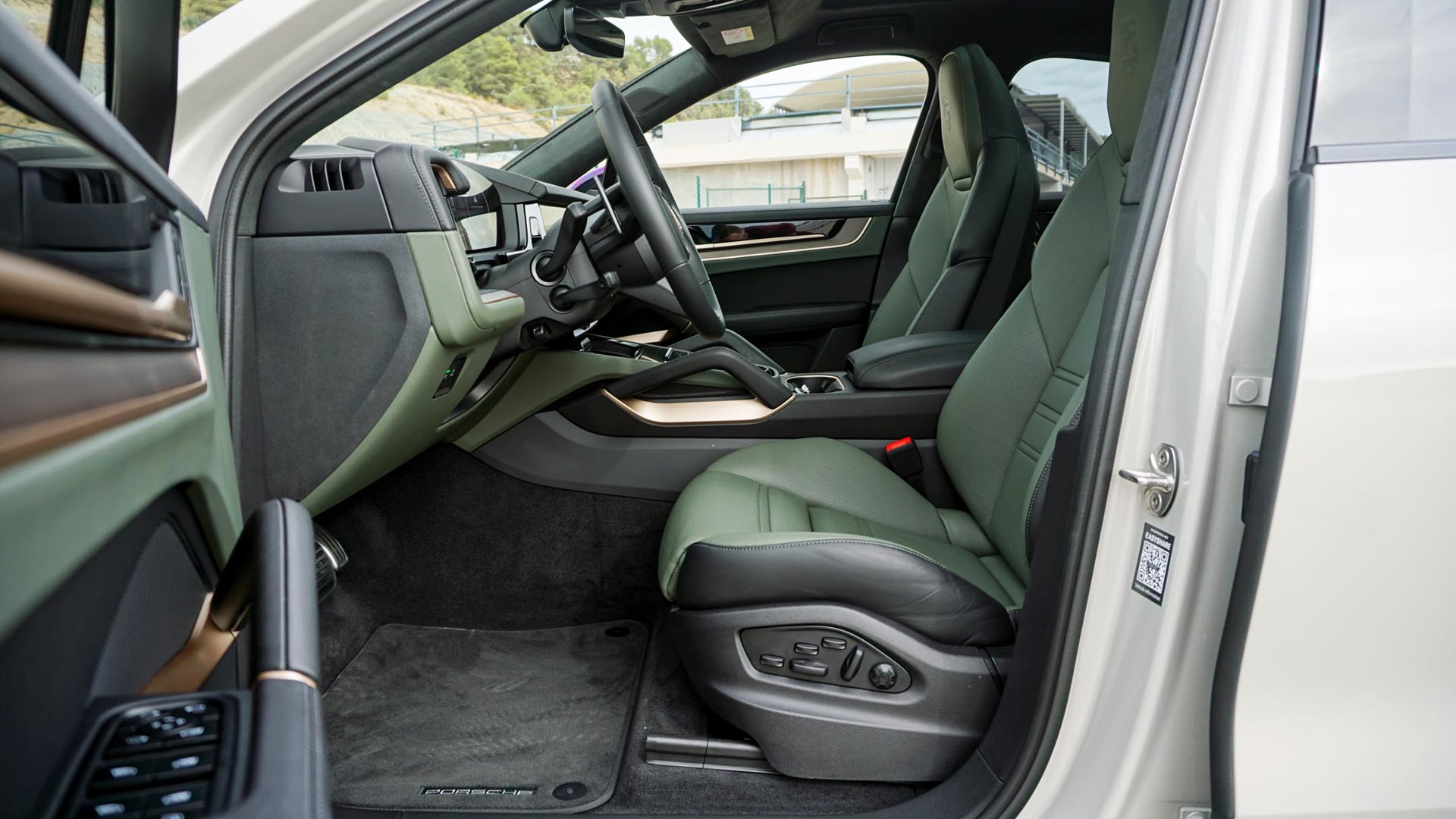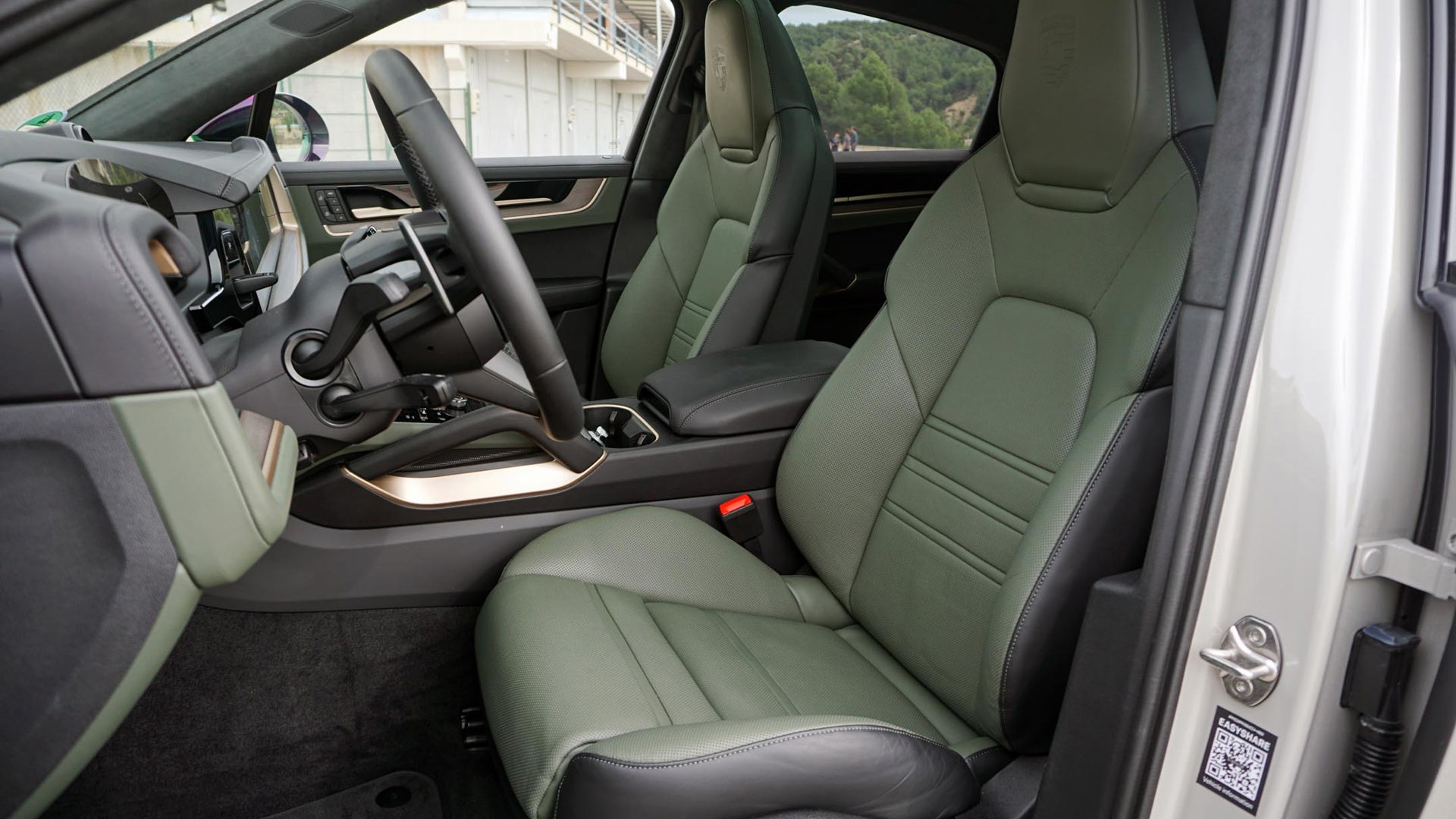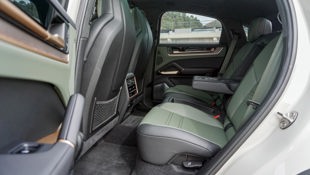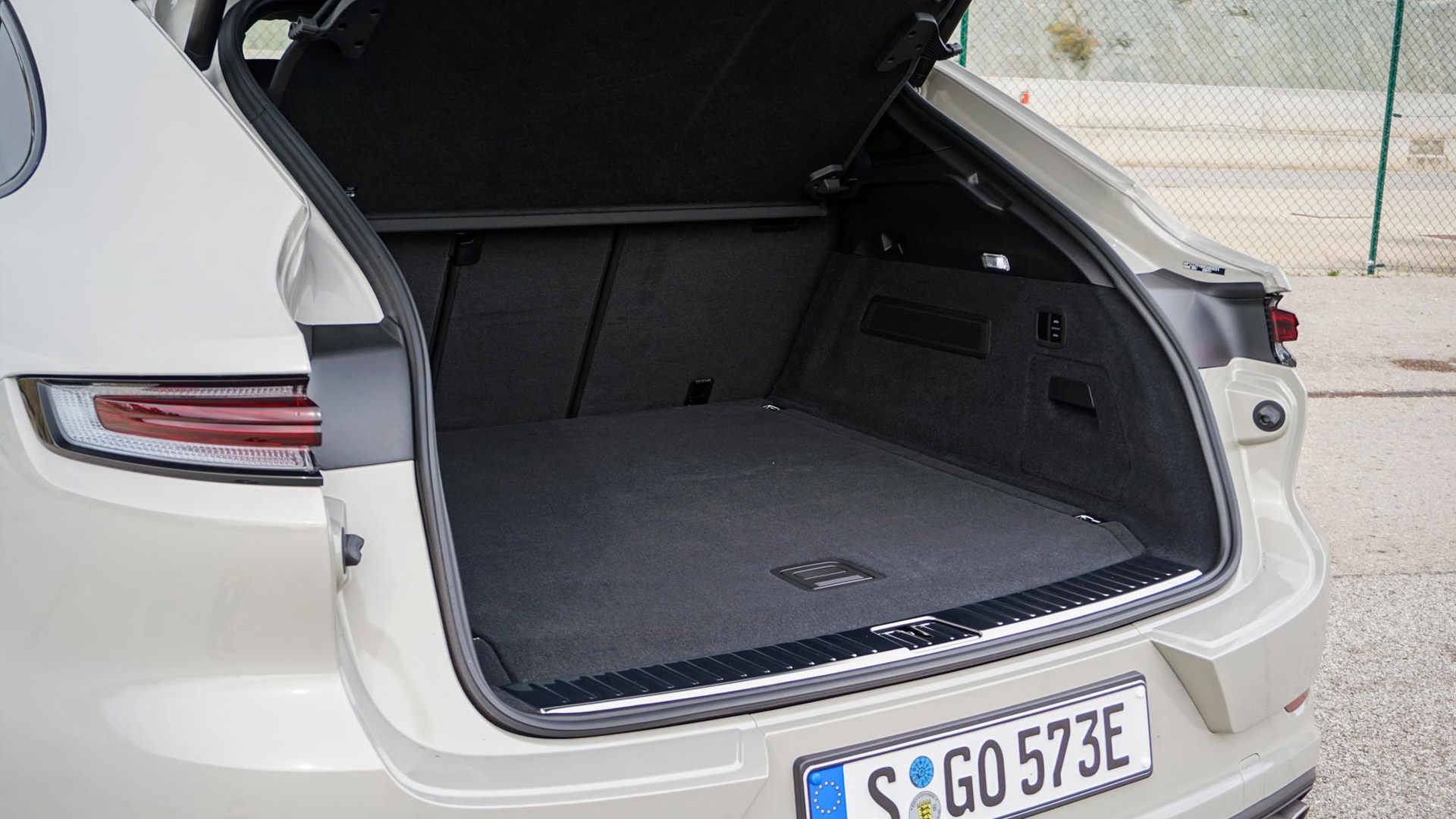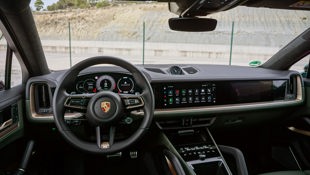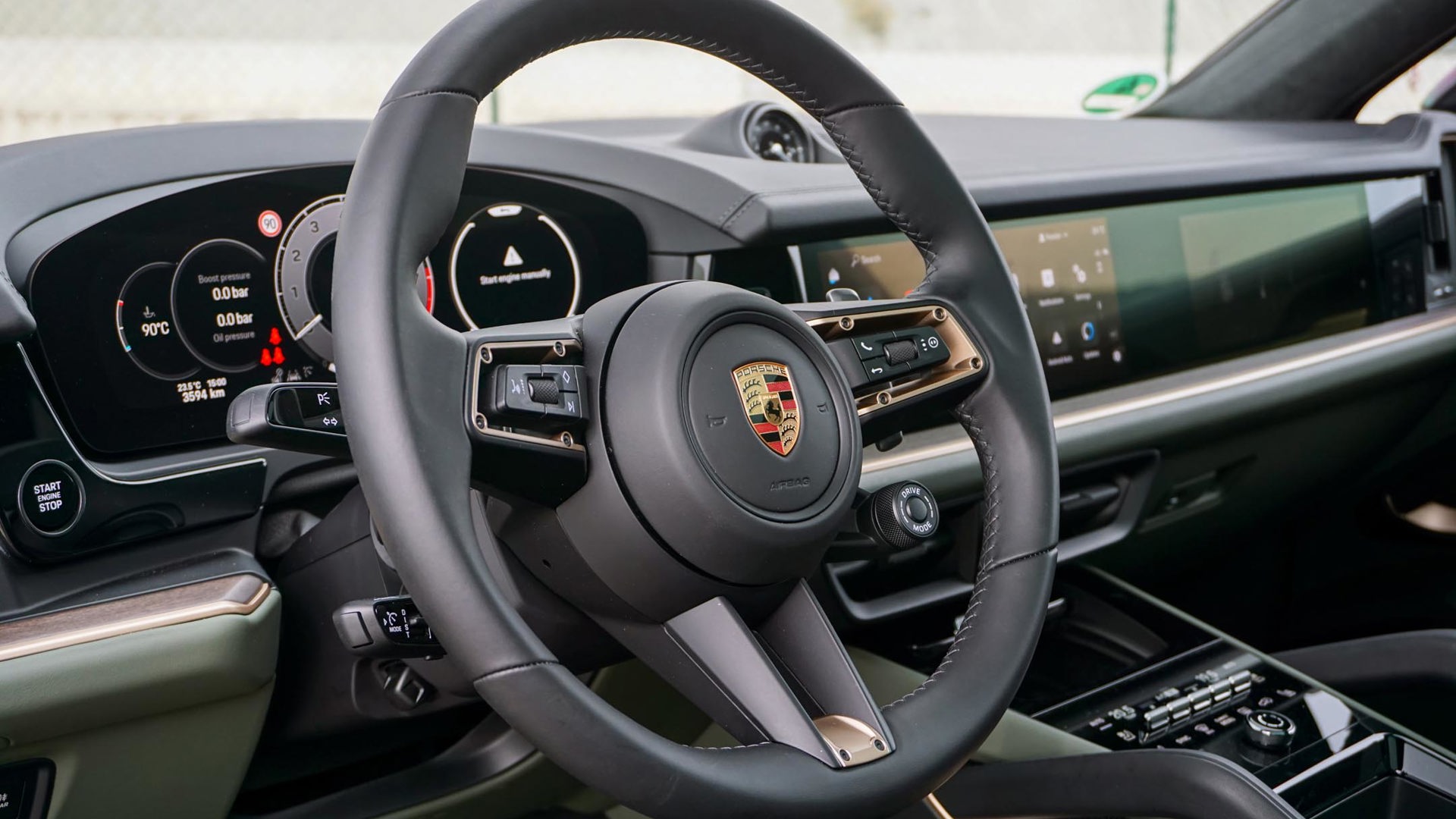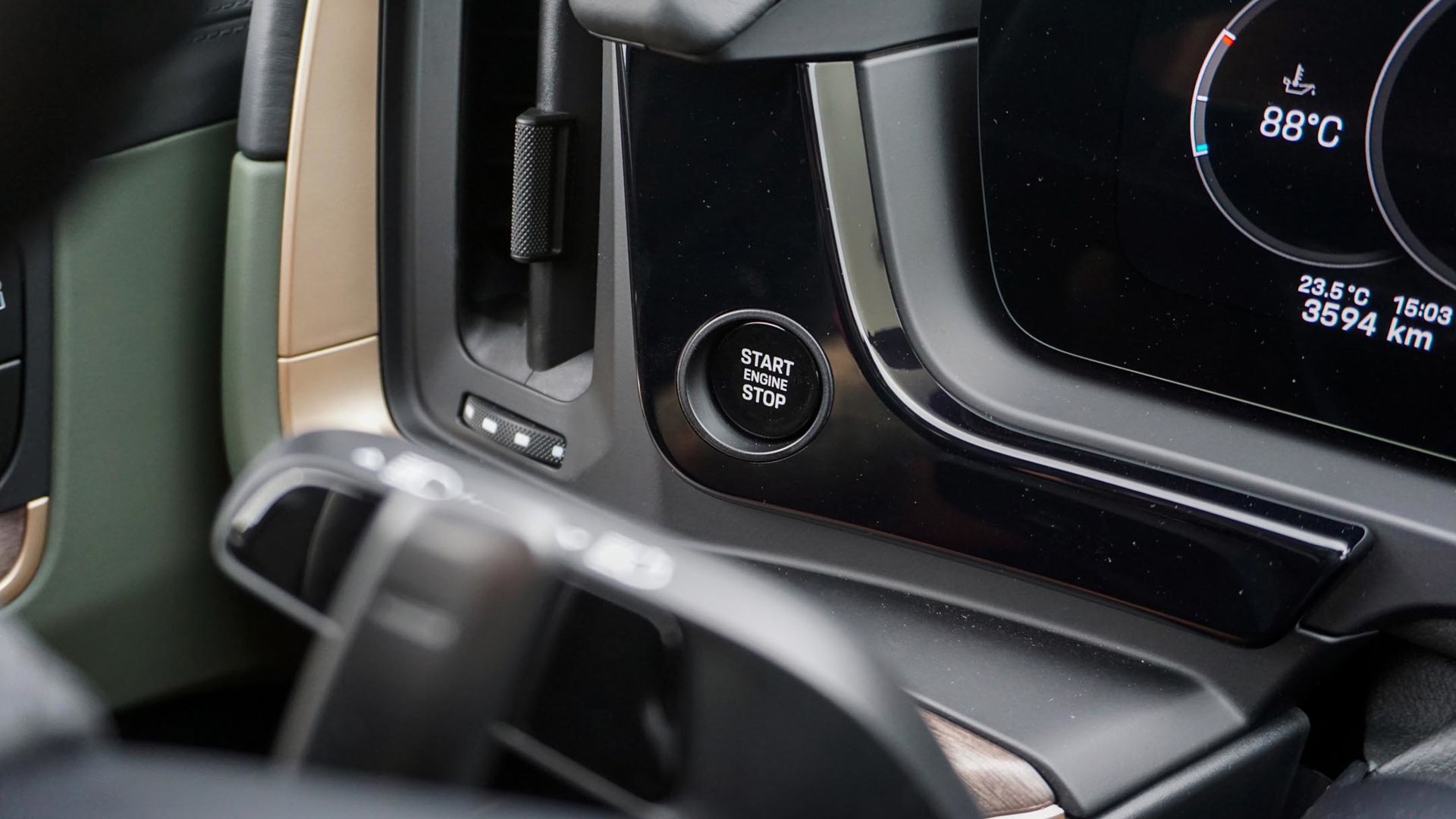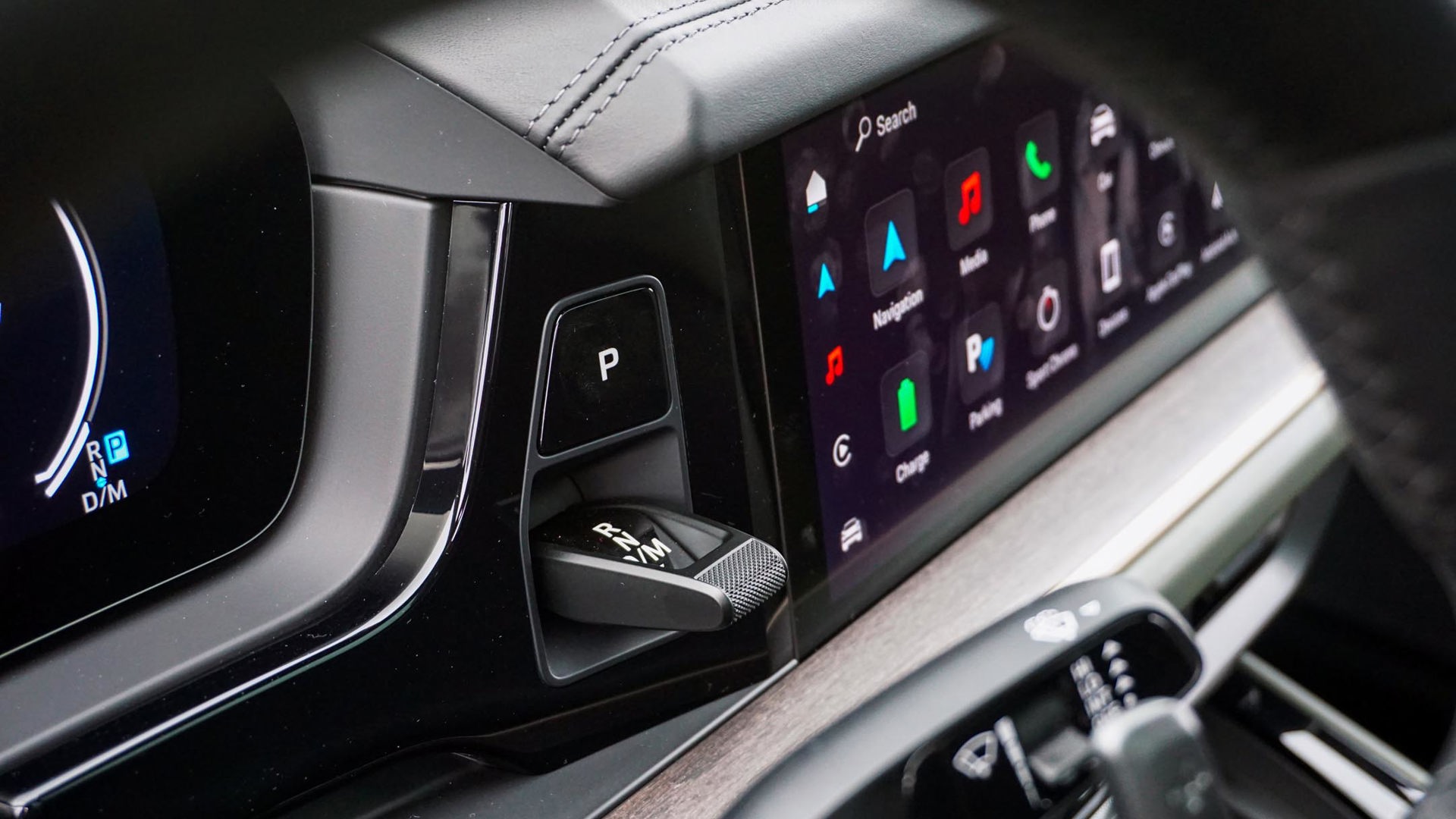More than 200 horsepower and almost $58,000 – those are the most notable differences between the two new plug-in hybrid (PHEV) versions of the 2024 Porsche Cayenne.
Of course, there’s more to the story than simple numbers, which is why we decided to break it down for you. Because while both are new additions to the same lineup, the 2024 Porsche Cayenne S E-Hybrid and Turbo E-Hybrid often feel like different entries entirely.
Different Engines, Same Electrics
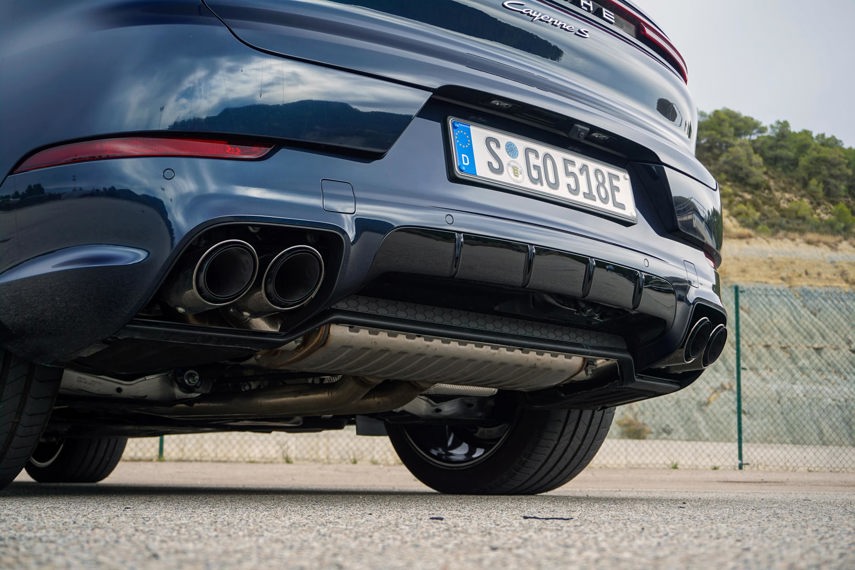
Among the stuff that separates them, the most significant can be found under their hoods. For the 2024 Porsche Cayenne Turbo E-Hybrid, it’s a new 4.0L twin-turbocharged V8 that’s been thoroughly overhauled for use in this range-topping trim. It starts with single-scroll turbos that replace twin-scroll units, with higher exhaust-gas pressure – and less fuel burned as a result.
It’s also been fitted with variable valve lift technology that improves performance and reduces emissions, according to Porsche. Output registers at 600 hp and 590 lb-ft of torque – significantly more than the Cayenne S E-Hybrid’s engine generates. That’s mostly because it’s a different engine with fewer cylinders and less displacement.
The 3.0L V6 in the lesser version uses just a single turbo and puts out 354 hp and 369 lb-ft. For the sake of comparison, the Porsche 911 makes 443 hp in Carrera S trim and 572 hp in Turbo guise, while there’s a Turbo S that spins up 640 hp.
Despite their different gas engines, the electric components these Cayennes use are identical. There’s an electric motor bolted between the engine and eight-speed automatic transmission, and it generates 130 kW of power – 30 kW more than the previous generation. Combined output is as staggeringly different as what the gas engines generate on their own, with the Turbo E-Hybrid generating a whopping 729 hp and 700 lb-ft of torque versus the S E-Hybrid and its 512 hp and 553 lb-ft of torque.
More Range Than Before
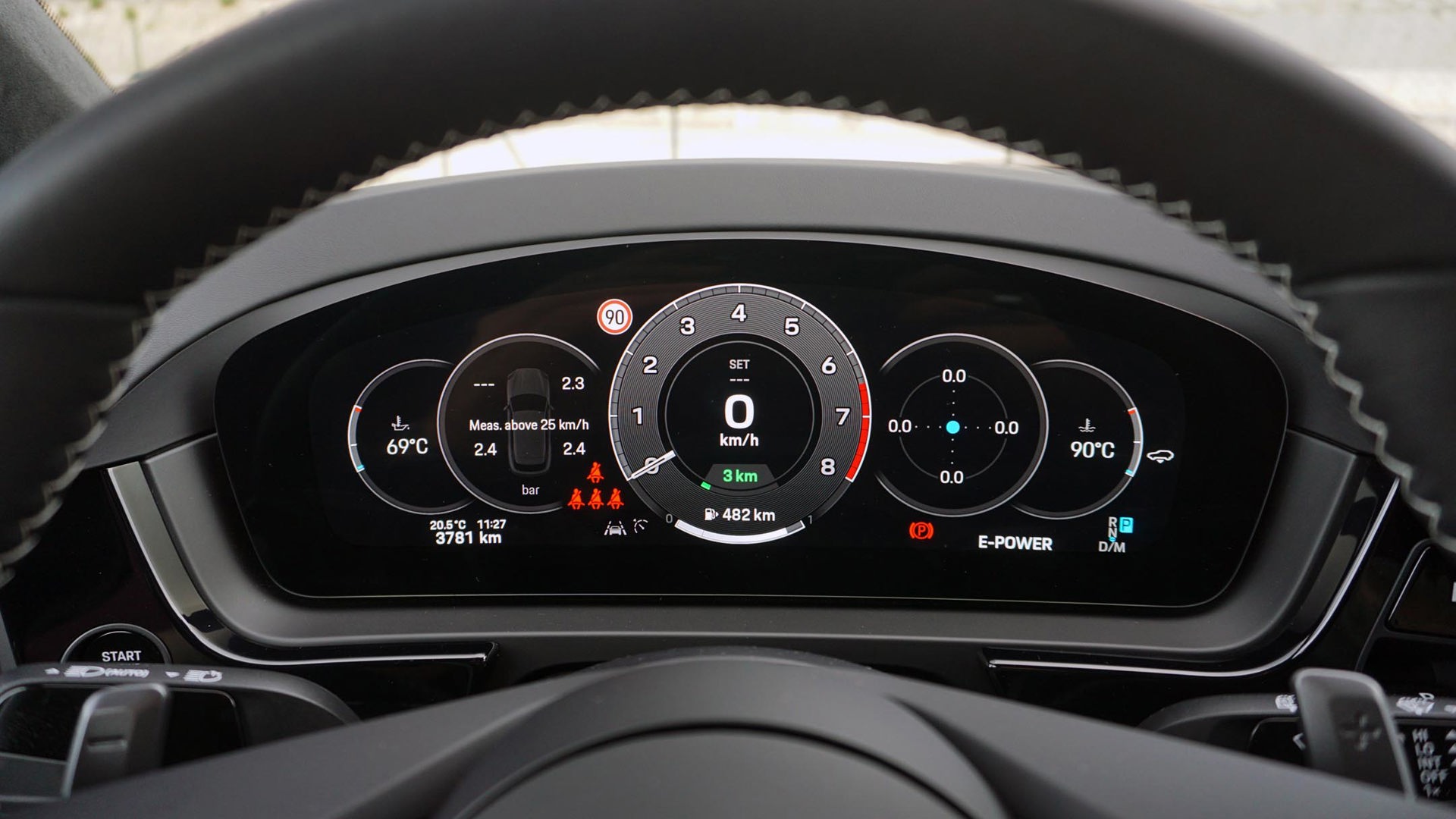
Feeding the electric side of the equations is a 25.9-kWh battery pack – bigger than the 17.9-kWh unit that was used in previous Cayenne E-Hybrid models. That means more range this time around, with the lesser of the two models capable of covering a combined 71 to 78 km on electricity alone, according to Porsche. Granted, that’s using European methodology that’s notorious for being more generous than the type in North America.
Even then, two different test units showed 65 km and 69 km of range, respectively, with their batteries fully charged. Expect the Turbo version to cover less ground without its gas engine running, with the same Worldwide Harmonised Light Vehicle Test Procedure (WLTP) numbers coming in at 70 to 73 km. Regardless, topping up the battery shouldn’t take long thanks to the new 11-kW onboard charger that’s equipped across the Cayenne E-Hybrid lineup. According to Porsche, all versions should be able to reach a full charge in a little more than two hours.
A True Track Weapon
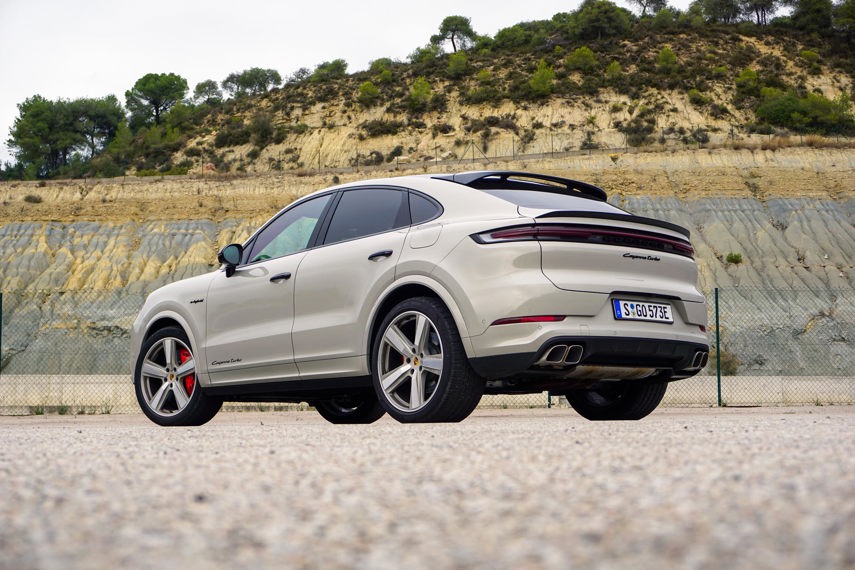
What percentage of owners who might actually take their Cayenne Turbo E-Hybrids to the track remains to be seen, but there’s no question this gas-electric SUV is capable should the occasion arise. Beyond all its output, this SUV impresses with its agility that defies its size. Its weight, however, is another story, with every one of the coupe version’s 2,595 kg (5,721 lb) presenting itself in rather obvious ways when cornering. The optional carbon-ceramic brakes certainly help, with the standard steel ones feeling rather limited.
Otherwise, for all its abilities this range-topping PHEV feels a little too predictable when pushed to the limits. Granted, it’s always good to have a sense of what a vehicle can – and, perhaps more importantly, can’t – do on the track; but there isn’t much of the wild side that other Porsche products like it possess.
A Docile Daily Driver
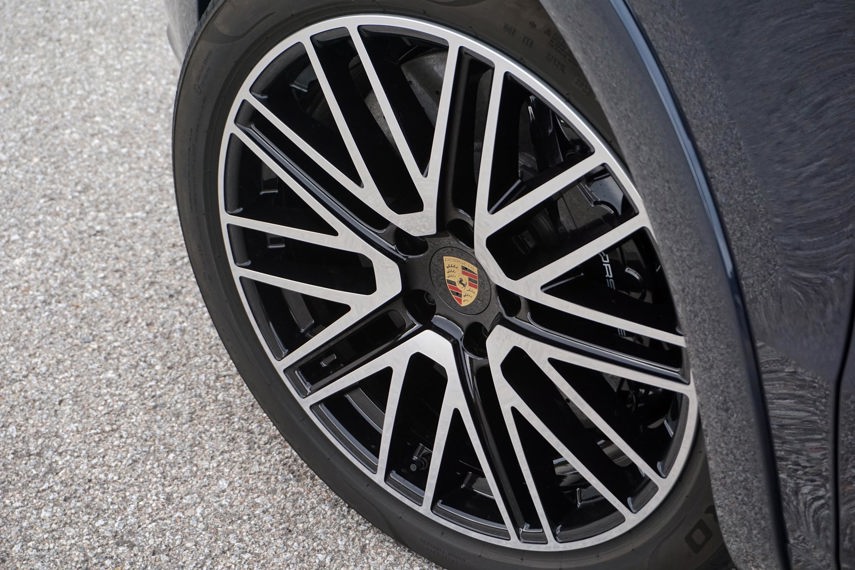
While the S version wasn’t tested on the track, it managed to feel much more harmonized when driven on the same roads. Ditching the eight-cylinder for a slightly smaller engine, among other tweaks and changes, ditches a significant 155 kg (342 lb) from the gas-electric Cayenne’s curb weight. Unsurprisingly, it’s the nose that feels lighter and better balanced against the rear-mounted battery pack, with less dive when braking into corners.
Make no mistake: 512 hp is more than plenty, with the S E-Hybrid feeling proportionally powered by comparison with its outrageous sibling. So while it’s happy to blast along the highway at triple-digit speeds that can be increased at ease to pass slower traffic, it’s also a bit more docile in the best ways.
The air suspension they both share helps to enhance that relaxed demeanour, with a perfectly pleasant ride quality that leaves the Cayenne feeling as luxurious as any other six-figure sport utility out there. Ditto the interior, which can be had with any number of materials including fantastic leathers, genuine wood, carbon fibre, and more. Plus, the cabin can be decked out with a number of screens, including twin entertainment displays for rear-seat occupants, and a dedicated on the dash ahead of the front passenger seat.
So Which Is Better?
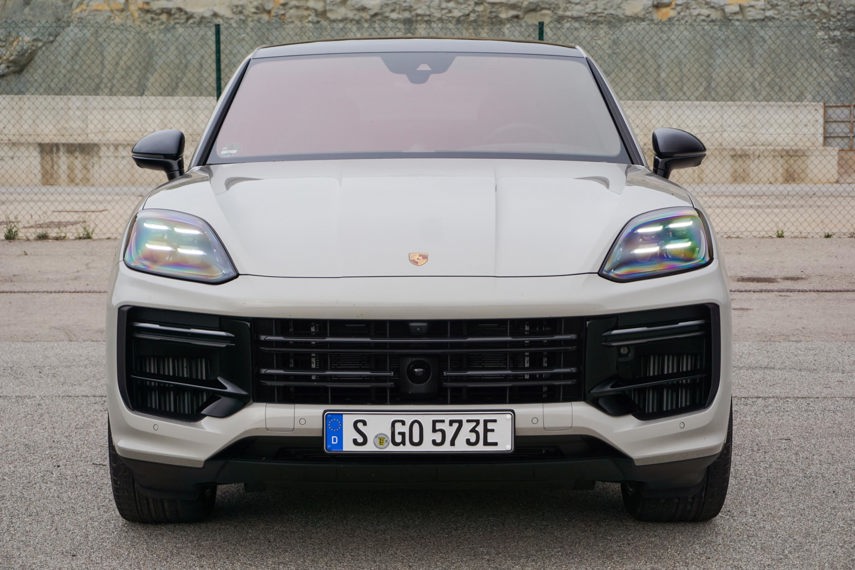
There’s certainly something exciting – or at least outrageous – about a 729-hp PHEV, and the price of this one seems downright reasonable. At $171,200 for the conventional version and $176,300 for the coupe, the 2024 Porsche Cayenne Turbo E-Hybrid undercuts the gas-only (and coupe-only) Turbo GT at the top of the lineup by some $42,000. But then there’s the $58,000 question: is it worth so much more than the less powerful – but better balanced – Cayenne S E-Hybrid?
For some, the answer is surely a foregone conclusion. Showing off a sport utility that will blast off from a standing start to 100 km/h in 3.7 seconds while also boasting some meaningful all-electric driving range is worth the price of admission. The Turbo badge has long amounted to a big leap for any Porsche products, and that remains true here.
But for $113,700 ($119,800 for the coupe), the 2024 Porsche Cayenne S E-Hybrid is an impressive machine in its own right. It’s smooth, balanced, and sporty, while benefiting from the same supple suspension and PHEV components as its pricier sibling. Add it all up, and it’s easy to see what makes this S version so appealing.
